6-I tank brigade. Technique and training
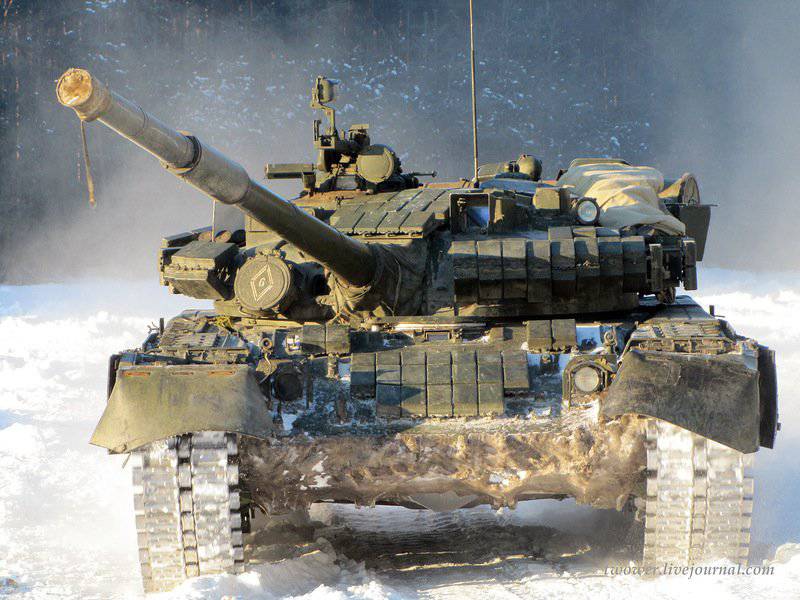
Official historical reference part:
6 separate tank The Czestochowa Red Banner Order of the Kutuzov Brigade was formed on March 3, 1942 near the city of Noginsk, Moscow Region, on the basis of 98 and 133 separate tank battalions as a 100 tank brigade.

1942 year.
On 6.08.1942/100/6, the 6th tank brigade under the command of Colonel Ivanov Nikolai Mikhailovich, according to the order of the commander of the 6th tank corps, took up its original position in the ZHELUDOV area, ready to enter the breakthrough, consisting of 2 tank corps. By order of the commander of the 252th TC, the brigade moved to the KROTOVA area, having the task in the morning of September 19 as part of the corps, in cooperation with XNUMX SD and XNUMX KK, to break through the enemy’s defenses and act towards the Sychevka station with the main task to separate the GZHATSKY-Sychevsky enemy grouping. Due to strong exposure aviation the enemy and the highly developed defensive system of fire, artillery and anti-tank systems, the brigade was not successful.
With 9.09. by 16.09. 1942, the brigade conducted offensive operations in the direction of MIKHEEVO, RZHEV with the task of defeating the RZHEV grouping of the enemy, where it first met with the Nazi tank divisions of the SS "Dead Head" and "Adolf Hitler"
17.09.1942, the brigade moved to the defense in the area KELOGUROVA-MIKHEEV. In the September battles, the team suffered heavy losses in equipment and personnel. By the decision of the command of 6 TK, the brigade is deployed in the 2 train, where it receives materiel and is replenished with personnel.
25.10.1942, the team is staffed up to the state and received the task, as part of 6 TC, to enter the breakthrough in the area of the JUMPOLDING VASILKI. Since the breakthrough was not made, the brigade was transferred to the area ZAVALOVKA-REFLECTOR-RADIONOVKA, from where the brigade led offensive actions. As a result of the fighting, the brigade suffered heavy losses in personnel and materiel. In the area of the station, NEVERZUY brigade at the expense of parts of the body is equipped with tanks KV.
1943 year.
10.02.1943 of the year by order of the commander of the 6 TK, the brigade plunged into the 3 railroad train and was transferred to the North-Western Front, where it became part of the 1 Tank Army.
23.03.1943, the brigade, on the orders of the commander 1 TA, withdrew from the 6 TK and entered into the operational subordination of the 69 Army.
17.04.1943, according to the order of the commander of the BT and MV North-Western Front, the brigade moved to the Voronezh Front.
14.06.1943, the team concentrated in the RAV area and became part of the 31 TC.
6.07.1943, the brigade moved to the area of the Kursk Bulge (BOGOAVLENSKY-BELITSY) where it received a combat mission ahead of the enemy, to reach the line of defense of the ball. MIKHALICHEVKA and prevent the enemy from advancing to the north. Having repulsed a counterattack, the brigade with the onset of darkness reached the area of MERRY where it received the task of attacking a broken enemy in the forest area of the MERRY farm.
During the period of battles with 7.07 on 10.07 1943 of the year, the team caused significant damage to the enemy. Destroyed by:
tanks - 42;
armored vehicles - 14;
self-propelled guns - 12;
artillery guns - 9;
soldiers and officers - 1000.
9.09. 1943 of the year in the area of the city of Sumy, the brigade was awarded the Fighting Red Banner. The banner was awarded on behalf and on behalf of the Presidium of the USSR Supreme Soviet by the Commander of 1 TA, Major General Katukov and member of the Military Council Major General Popel.
Over the course of 11.07 to 10.12 1943, the team conducted active hostilities, where it inflicted heavy losses on the enemy. Destroyed by:
tanks - 66, of which 8 "Tigers";
armored vehicles - 106;
VET - 40;
Killed soldiers and officers - 1400.
Brigade Losses:
Tanks - 28;
Cars - 4;
Killed and wounded - 237;
Missing - 13.
1944 year.
1.01.1944 of the year according to the order of the commander of 31 TC No. 0001 from 1.01.1944, the team is staffed with materiel and personnel up to the state and redeployed to a new area by rail. Station loading Sum, station unloading - KAZATIN. After unloading at the KAZATIN station, the brigade concentrated in the 2 area, km north-west of KAZATIN, where it received the task of making the 46-km march to the area of SPICHINTS, ILINETS with the task of taking up the defense and being ready to repel enemy attacks.
12.02.1944, the brigade plunged into the PRE-BURNER station and made a march by rail to the unloading station SYULKESH, VERBOVTSY, where she was engaged in combat and political training.
During the fighting in January, February and March, the brigade caused damage to the enemy:
Destroyed by:
Tanks - 46;
Tools of different caliber - 24;
Self-propelled guns - 8;
Cars - 72;
Armored vehicles - 9;
Armored personnel carriers - 6;
Killed soldiers and officers of the enemy - 1600.
In August, the 1944 of the year, the team consisting of 31 TK is introduced into the breakthrough along the route OMBROVO, POGAGOV, PASSETNA, KRUTLOV. During the hostilities during the month of August, the brigade participates in the destruction of the Brodsko-Lviv enemy group. During the fighting during the month of August, the brigade caused damage to the enemy:
Destroyed by:
Tanks - 6;
Tools of different caliber - 8;
Armored personnel carriers - 4;
Cars - 20;
Killed soldiers and officers of the enemy - up to one regiment.
Brigade Losses:
Killed, injured and missing officers - 41; sergeants - 90; privates - 96;
In September and October, the brigade conducts heavy defensive and offensive battles in the areas of RUDAEVKA, RYMANOVSK, TARNUVKA, VISLUCHEK, MEETING and is connected to 1 of Gu. Horse Cavalry Corps. In the future, leads offensive actions, in the course of which seizes these settlements.
In December, the brigade gets out of the fighting and makes a march on the Vyslensky bridgehead, where it concentrates in the SFSUV area, the length of the march is 146 km. Here, the team gets a new material part.
Tanks T-44 - 60 units
Personnel staffed to the state.
1945 year.
12.01.1945 of the year after a massive artillery preparation brigade is introduced into the breakthrough on the Vyleny bridgehead, near the village of KUHARA, elevation. 208,6 in the 13 th SD. For the breakthrough of the enemy’s fortified defense west of Sandomir, the brigade personnel received gratitude from the Supreme Commander in order No. 219 of 13.01.1945, and the brigade for the exemplary execution of the command of the command in the battles during the breakthrough of defense west of Sandomir and showed valor and courage by decree of the Presidium of the USSR Supreme Council February 19 1945 awarded the Order of the Red Banner
January 25 brigade seizes the large center of the Silesian industrial region of Germany, where there were several military factories - the city of Gliwice. For capturing the powerful German defense unit, the personnel in the order of the Supreme Commander No. XXUMX received thanks, and the team for the exemplary execution of command assignments in battles with the German fascist invaders, for mastering the cities of Gleywitz and Khtatov and showing courage and valor with the order of the Supreme Presidium 253 Council of February 19 was awarded the Order of Kutuzov II degree.
26 January 1945, the team seized a large industrial center and a powerful point in Silesia - the city of Hindenburg. For this, the personnel in the order number XXUMX received thanks from the Supreme High Command. 257 January, Moscow again saluted the soldiers of the brigade, now for complete cleansing of the enemy Dombrowski coal region in the southern part of the industrial region of Upper Silesia.
In January, the brigade is successfully moving ahead, and at the same time, it seizes the settlements of NAKLO, SHCHEKOTSY, forcing the Pulinitsa River and advancing in the direction of Czestochowa, and seizes it. By order of the Supreme Commander No. XXUMX of the year for crossing the Warta River and taking possession of the city of Czestochowa, the brigade received the honorary title of "Czestochowa" and became known as the 225 Red Banner Czestochowa Brigade.
During the period of offensive operations in January, the brigade suffered losses:
Killed soldiers, sergeants and officers - 133;
Wounded soldiers, sergeants and officers - 239;
Burned out tanks - 27;
Downed tanks - 21;
Enemy losses:
Tanks - 7;
Guns - 144;
Mortars - 19;
Self-propelled guns - 13;
Soldiers and officers killed - 763;
Captured soldiers and officers - 144;
Released from prison and prisoner of war camps - 4800 people.
Captured settlements - 131;
Railway stations - 18;
Major cities - 14;
In February, the brigade continues to fight in the territory of German Silesia and seizes the cities of Neitdel, Neusalts, Freistadt, Shiratrarau - important strongholds of the German defense. For the courage and heroism shown during the occupation of cities, the personnel of the brigade in order No. 278 from 14.2.1945 received thanks from the Supreme Commander.
In March, Moscow saluted three times in honor of the victory of the brigade soldiers.
On March 23, the brigade broke through the enemy defenses south-west of the city of Opeln and captured the cities of Steypau, Selz, Ober, Glogau. The personnel received thanks from the Supreme Commander. Continuing the offensive, 24 in March, the brigade captured the city of Neuss, a strong stronghold of the Germans. On March 31, the warrior personnel again received the thanks of the Supreme Commander for taking possession of the city of Rotibuj.
In early April, the 1945 100 Tank Tank of the Czestochow Red Banner Order of the Kutuzov 31 Tank Corps forced the Oder River, broke through the fortified German defenses and, together with other corps, seized the cities of Olau, Brig, Tamaspirya, for which the unit, in the same way, it is not as a default, it is not as a default, it is to go, it is the default, it is the default, it is the same as the mode, it is the same way, it is the same as the reason, it is the same), it is the same as the source, which is used the same way, the 15th – 10th – 10-d) block of the order of the Odesa, Brig and Tamaspira, for example, in the United States, which is in the same way, it is not necessary, it is necessary to go to the red April 270 received thanks
In pursuit of a retreating enemy, the brigade reached STARN. As a result of the brigade’s decisive attacks, the enemy was defeated. But meeting the stubborn resistance of the enemy, the brigade successfully continued to move forward. 10 May 1945 of the year entered the eastern outskirts of Prague, where she actively participated in the liberation of the capital of the Czechoslovak Republic.
For heroism and courage to company commander captain A.G. Achkasov, foreman mechanic driver N.K. Volkov, Art. Sergeant Trembach K. T. was awarded the title Hero of the Soviet Union.
The fighting team went over 2500 km. During the period of hostilities in the brigade was awarded:
- Orders of the Battle Red Banner - 39 man;
- Orders of the Patriotic War, I degree - 160 people;
- Orders of the Patriotic War, II degree - 230 people;
- Order of Suvorov II degree 1 people;
- Order of Alexander Nevsky - 6 people;
- the Order of Glory And the degree 123 - man;
- medal "For courage" - 303 person;
- Medal "For Military Merit" - 130 people.
In July 1945, the brigade moved to the state of the tank regiment. The order of the commander of 31 tank corps No. 110 from 20.07.1945 year.
From 1946 to 1956 year 100 tank Czestochowa Red Banner Order of Kutuzov II Art. the regiment did not take part in the hostilities.
1956 year.
In 23: October 30 31 the regiment was raised for combat alert. Having made a combined march (tanks by rail, wheeled vehicles - under their own power), the regiment to 24: 00 2.10.1956 went to the Beregovo area in readiness to assist the Hungarian people in suppressing the counter-revolutionary rebellion. By order of the commander of 31 Tank Division 2.11.56. in the Beregovo area, a special-purpose battalion was formed from the 100 tank regiment. The battalion entered the disposal of the Commander of 8 of the Mechanized Army and until 8.11.56, performed the task of fighting the rebels in the cities of Debrecen and Miskolc.
On the night from 4 to 5.11.56 and the day of 5.11.56, the regimental units cleared the rebels of the occupied settlements, established public order, disarmed the gangs and helped the population to create local government.
12.11.1956 was ordered by the commander of the Special Corps of the regiment and returned to the 31 Panzer Division and to 19: 00 was concentrated in a military town on the eastern outskirts of Asod.
During the fighting the regiment destroyed:
tanks - 3;
VET - 33;
machine guns - 80;
anti-aircraft installations - 31;
rebels - more than 500.
Captured:
prisoners - 528 people;
zen. guns - 70;
Ammunition - 64
cars
radars - 4;
automatic machines - 430;
tractors - 2;
guidance stations - 1;
ammunition depots - 3;
rifles and carbines - 102;
pistols - 41;
machines - 63.
During the period of actions to eliminate the counter-revolutionary rebellion in Hungary, the regiment suffered losses:
Personnel: 10 people killed (officers - 2; sergeants - 1; soldiers - 7), injured 12 people.
In the material part and weapons: 37 mm guns - 1; GAZ-63 car - 1; DShK machine guns - 1; radio stations RBM - 1.
From 12.11.1956 to the end of 1956, the regiment, having a military town on the eastern outskirts of the metro station Asod, was deployed to guard military plants and warehouses in Cherveldy, Balashashyarmat, Salgotarjan, ASOD; conducted intelligence, assisted the Hungarian people in the establishment of proper order and local authorities.
Since 1957 1967 by city
100 tank regiment in the campaigns and battles did not participate.
1968 year
7 May 1968, the regiment was raised on alert, received a replenishment of personnel 170 man, called up from the reserve and made a combined march as part of the 31 Panzer Division.
9 May 1968 of the year to 18: 00 concentrated around the city of Uzhgorod s.Korytnyany Transcarpathian region, where he put the equipment in order and began to engage in combat and political training.
20 of the regiment 1968, the regiment in 23: 00 was raised on alert and received a task in 2: 00 21 in August 1968 to cross the state border of Czechoslovakia in the city of Uzhgorod to provide fraternal assistance to the Czechoslovak people in the fight against counter-revolutionary elements. The regiment, fulfilling the task, crossed the state border near the city of Uzhgorod, made a march along the route Mikhailovtsy - Zilina.
K 14: 00 21 August 1968 of the year by making 360km. The regiment march from the area of Martin redeployed to the city of Frenstat, Czechoslovakia, to a permanent location and began combat training.
During the march, the regiment suffered casualties:
Killed - 1 man (captain O. Derkach);
Wounded - 1 man (Sergeant Lebedinsky).
Losses in the material part:
ZIL-150 vehicle - 5 unit
From 1969 to 1990, 100 TP as part of 31 gu dd was located in Czechoslovakia.
In connection with the agreement to reduce the number of troops in Eastern Europe, the regiment relocated in 1990 in the city of Dzerzhinsk, Gorky Region.
From 1969, the 100 tank regiment did not take part in campaigns and battles.
In accordance with the directive of the General Staff of the Armed Forces of the RF Armed Forces in 2009, on the basis of the 100 tank regiment, a separate tank crew was formed by the 6.
A tank brigade is a strike fist, acting in the interests of the senior commander and intended for delivering counterattacks.
The brigade is armed with T-80BV tanks. They are already quite age-related, but, apparently, they will not be replaced before the start of deliveries of the new Armata tank. This is just my guess, but it is the most logical.
In the photo of the T-80 of the RUBViT company (a company of combat training weapons and equipment) at the brigade tankodrome. The RUBViT company allows saving the service life of the combat group’s machines, since these machines are intended solely for training and are not withdrawn from the battalions
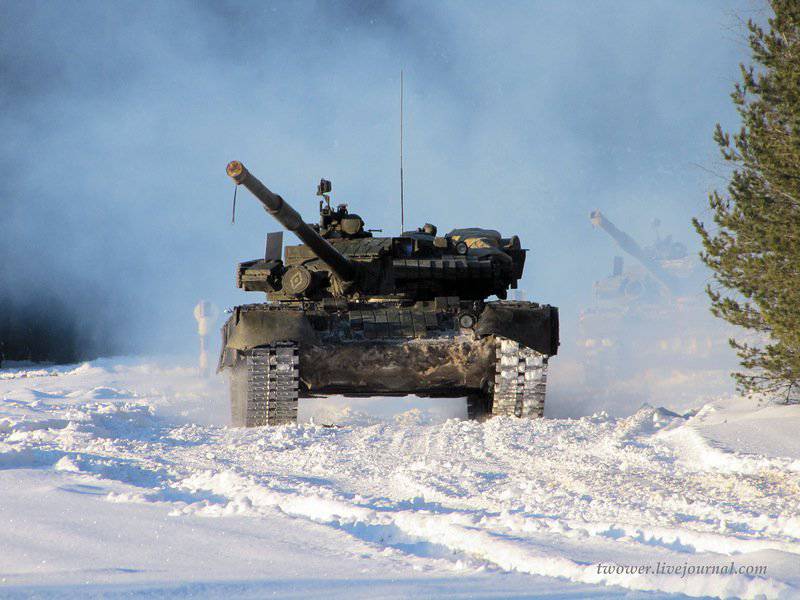
2.
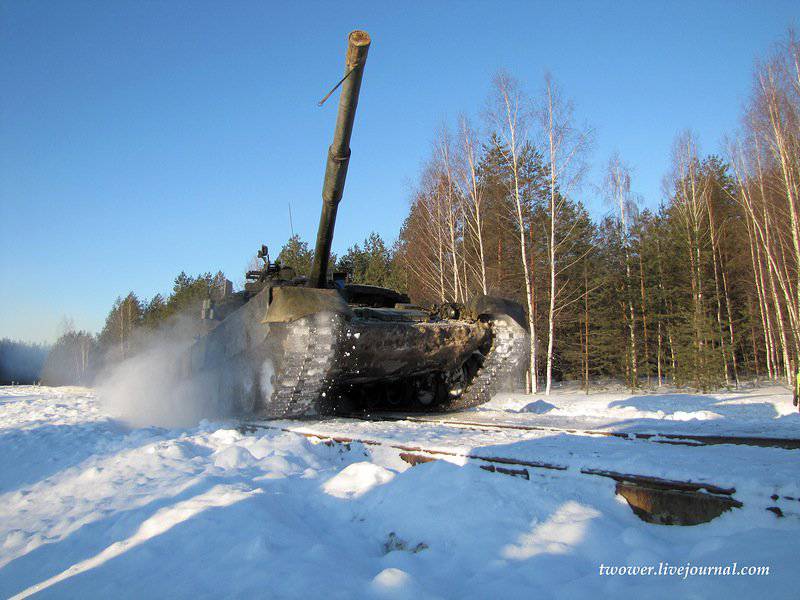
3.
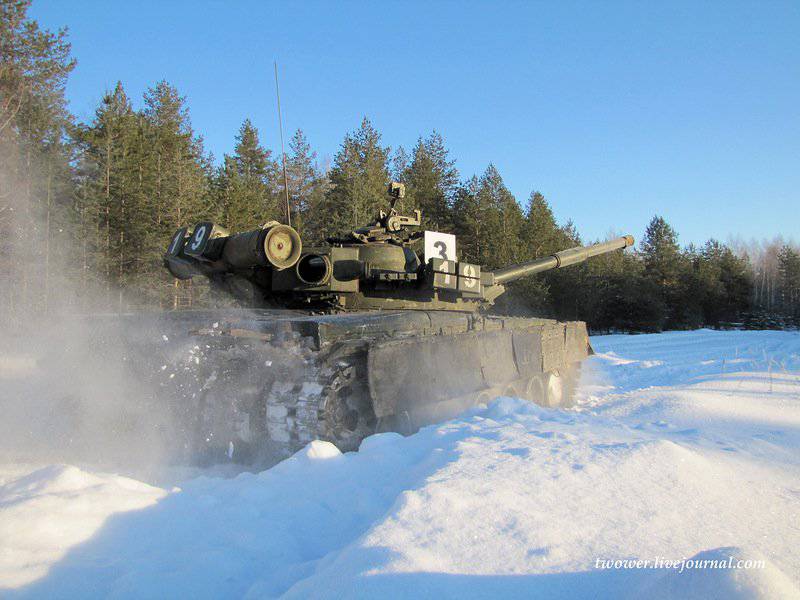
4.
Development of entry-exit trailer
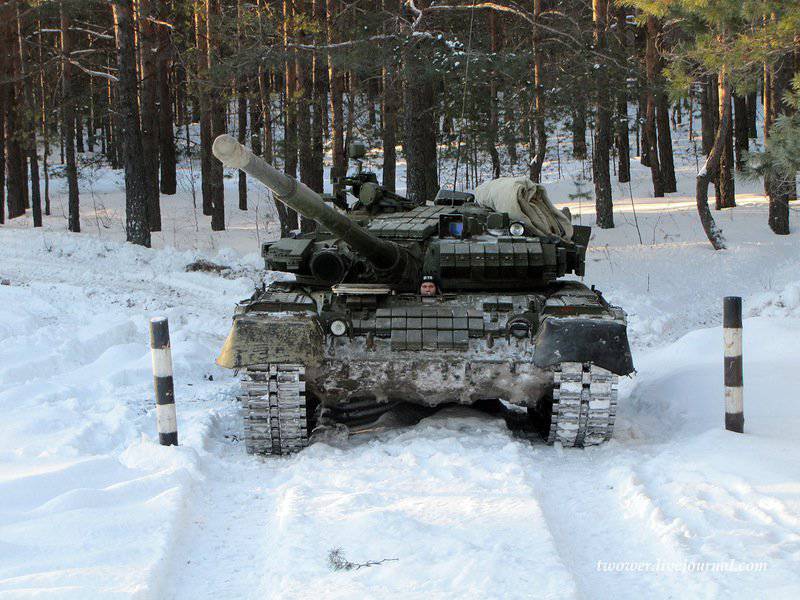
5.
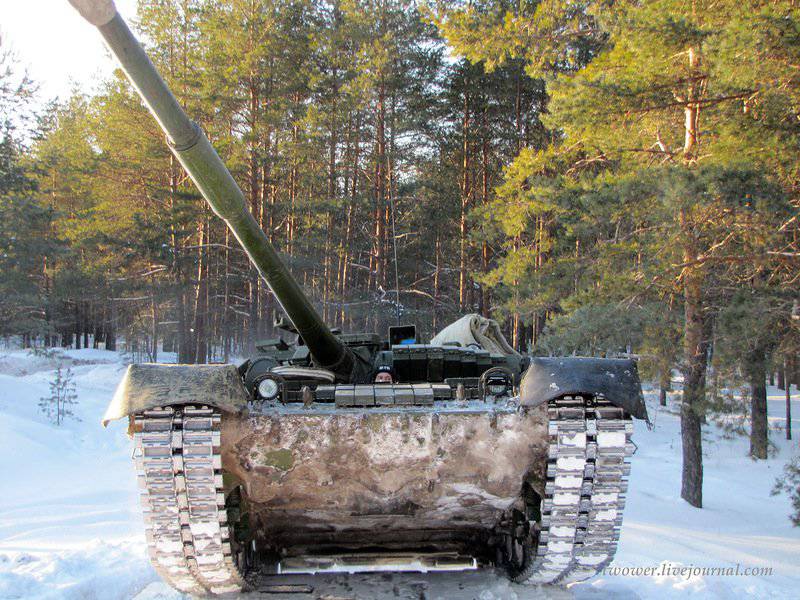
6.
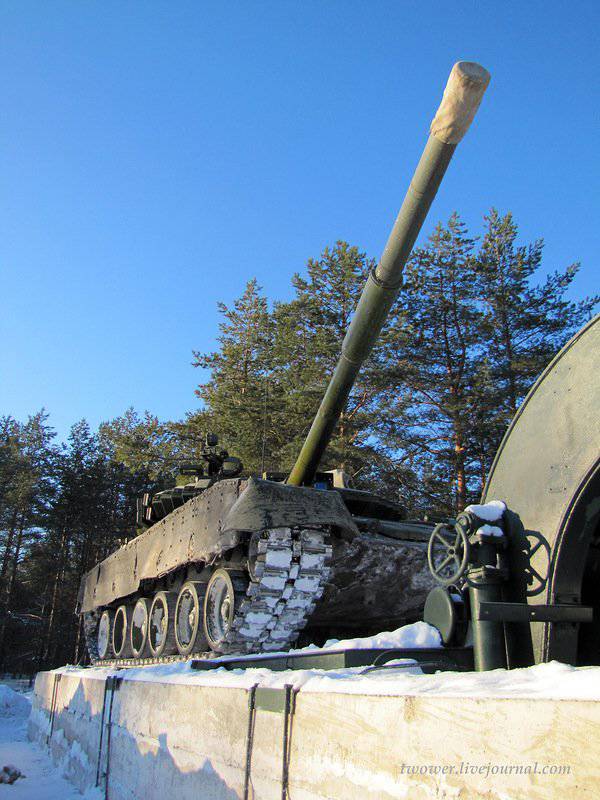
7.
Entry-departure to the trench
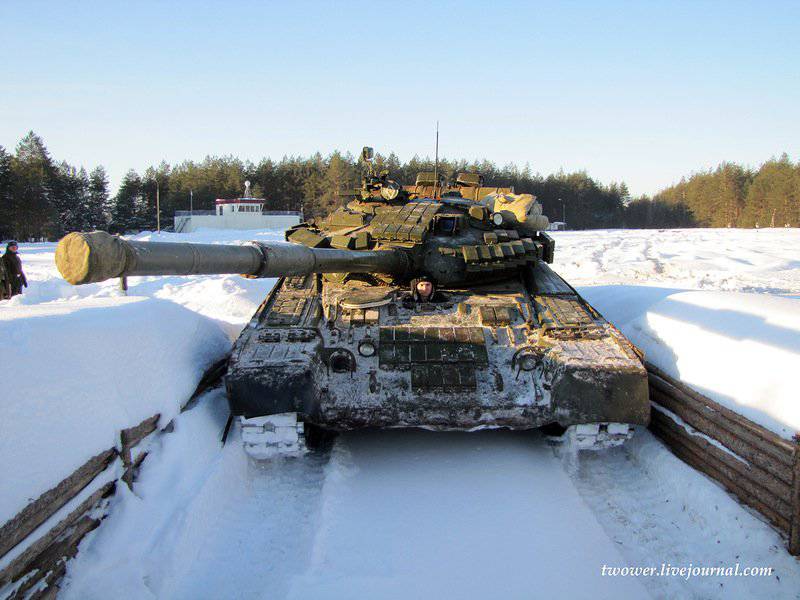
8.
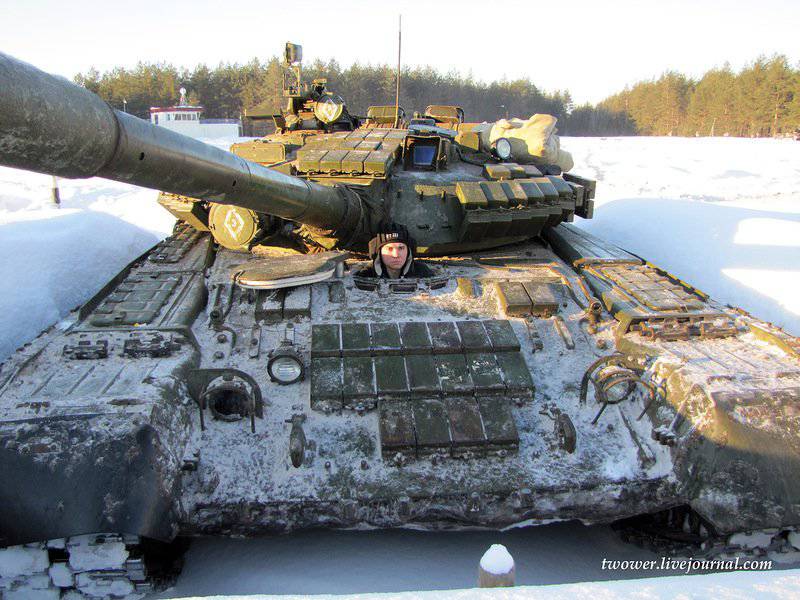
9.
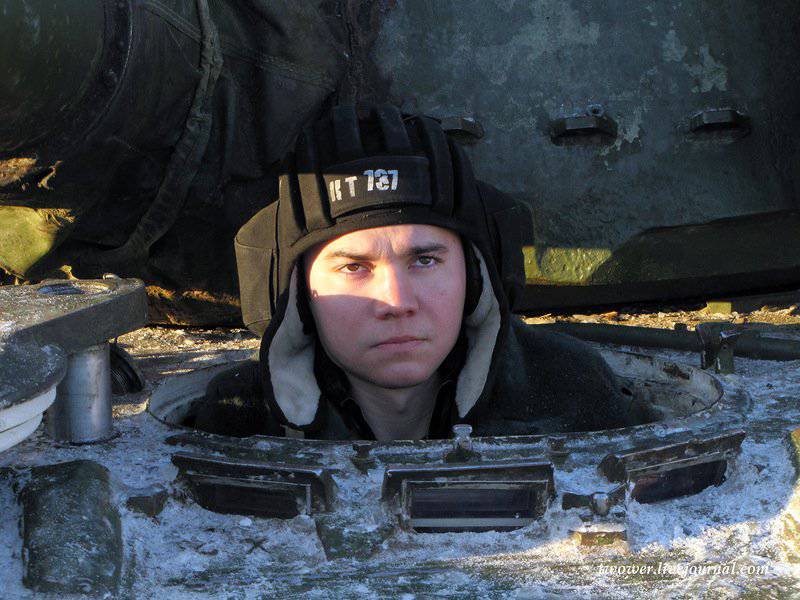
10.
T-80 brigade at the joint Russian-Belarusian exercises "Union-2011 Shield"
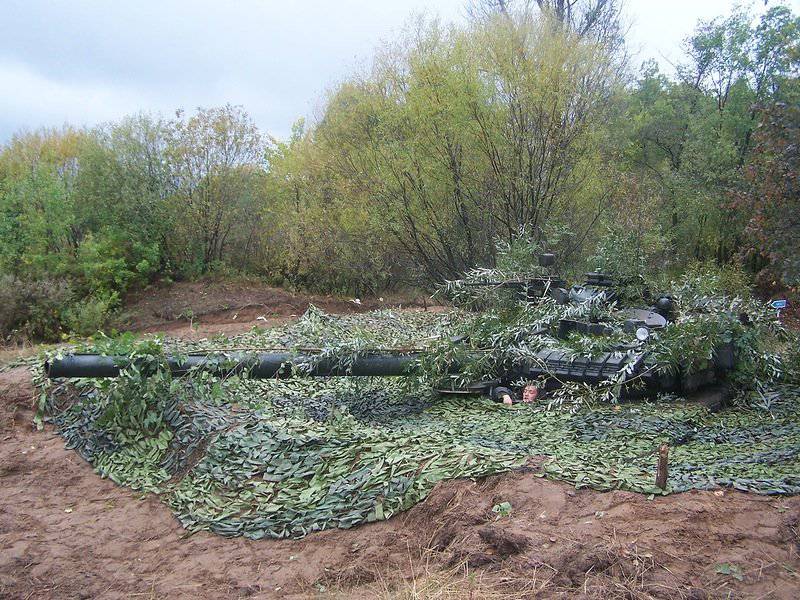
11.
Crossing
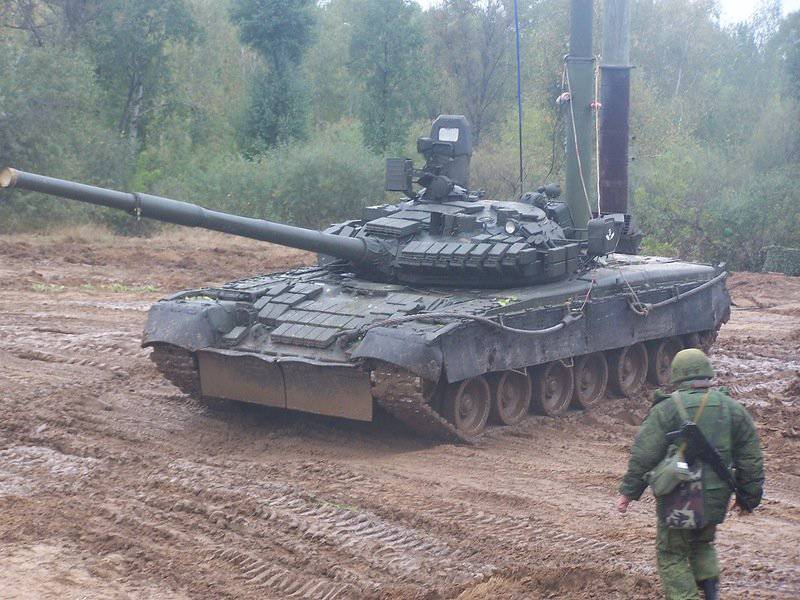
12.
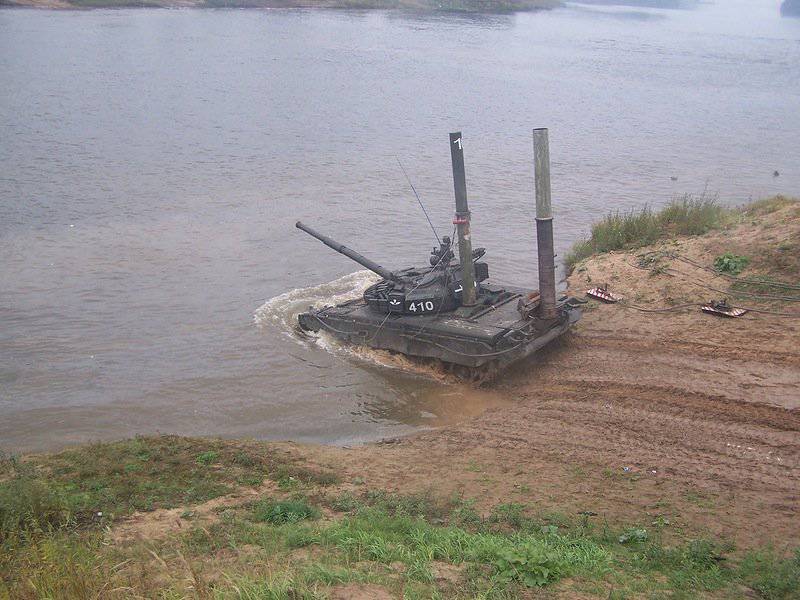
13.
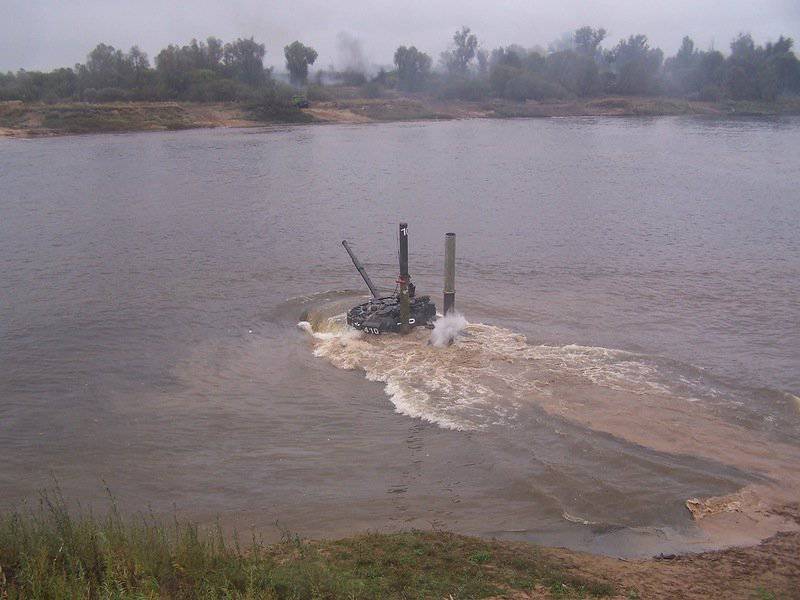
14.
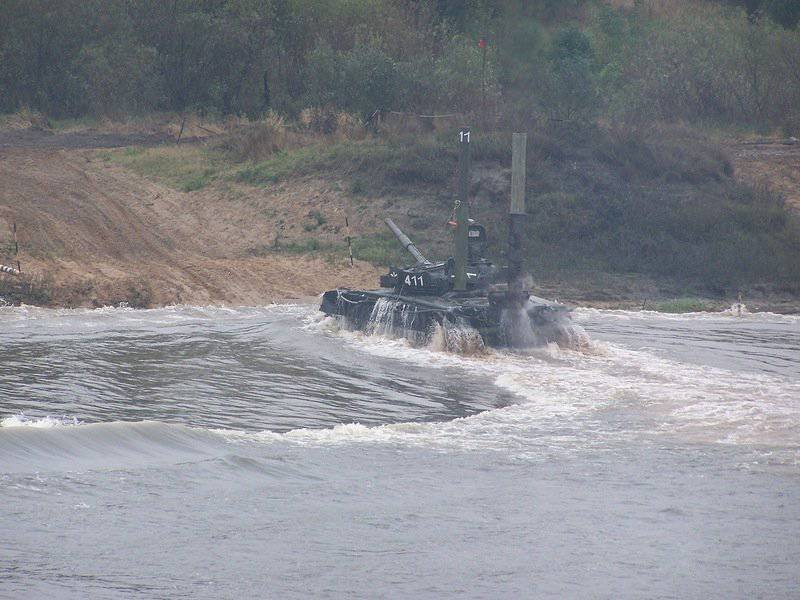
15.
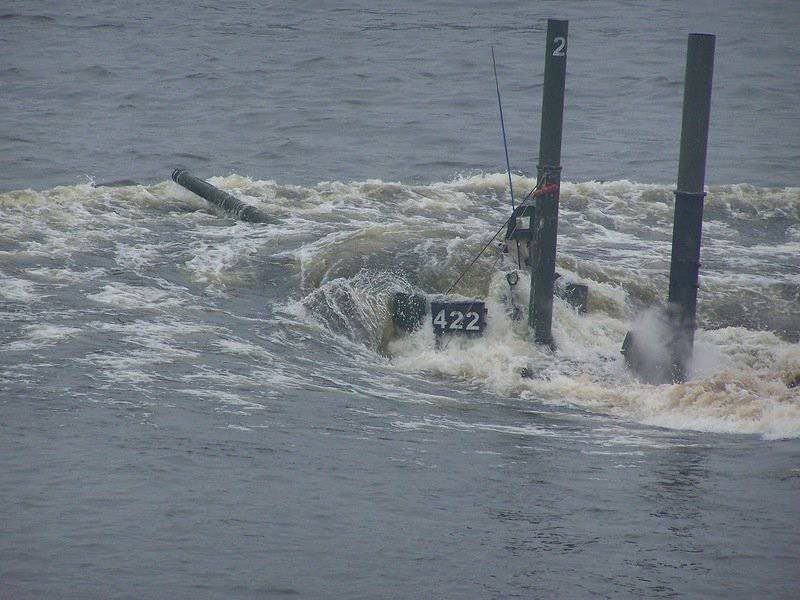
16.
This is the crossing of the brigade's motorized rifle battalion.
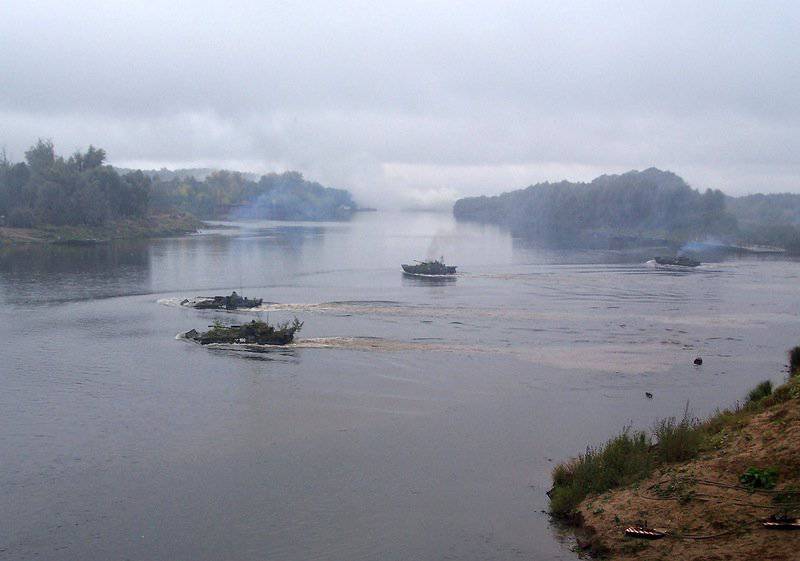
17.
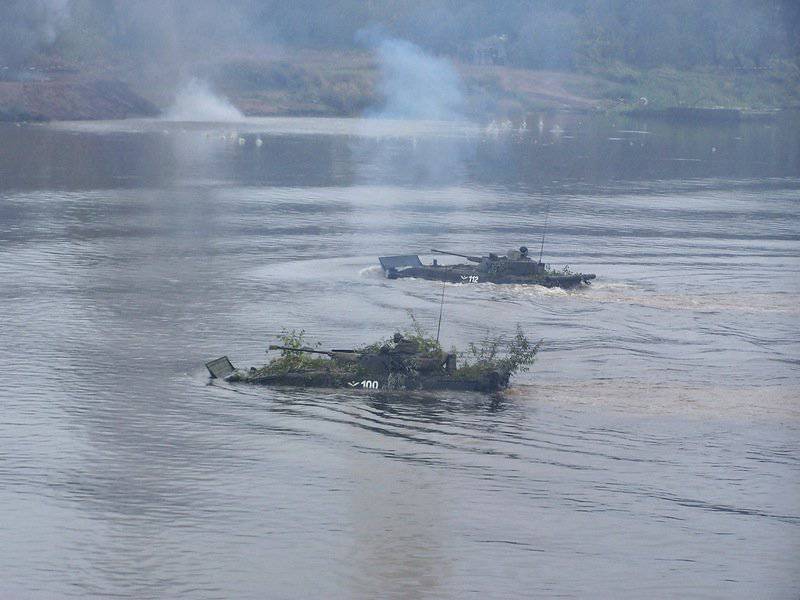
18.
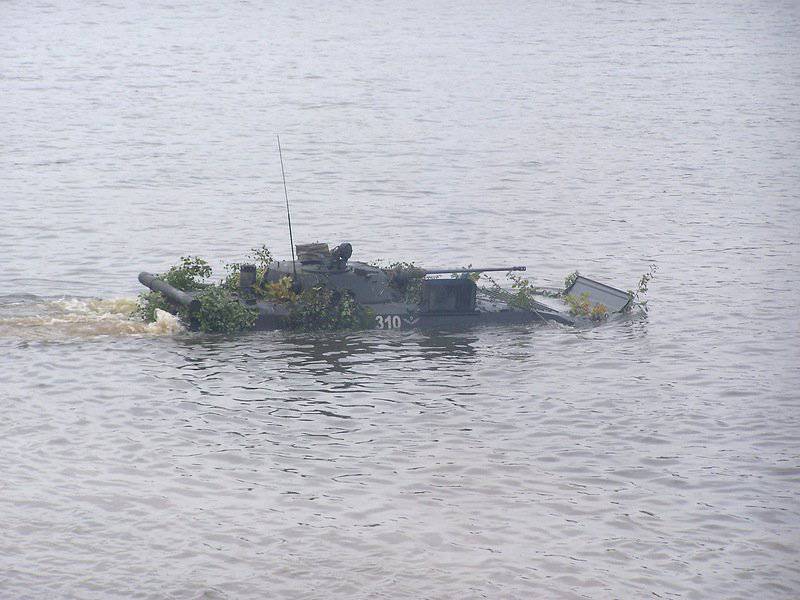
19.
Command and Staff Module on the Union-2011 Shield Exercise
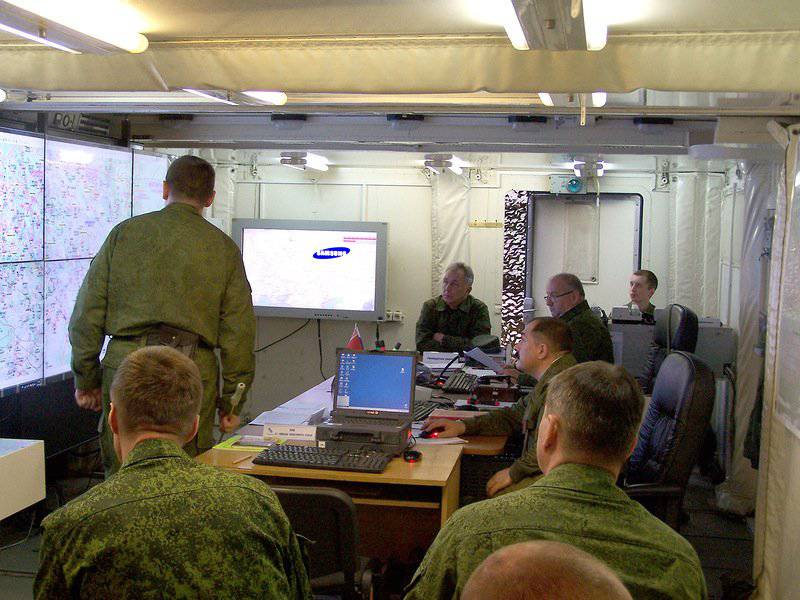
20.
One of the summer exercises last year on the crossing over the water barrier
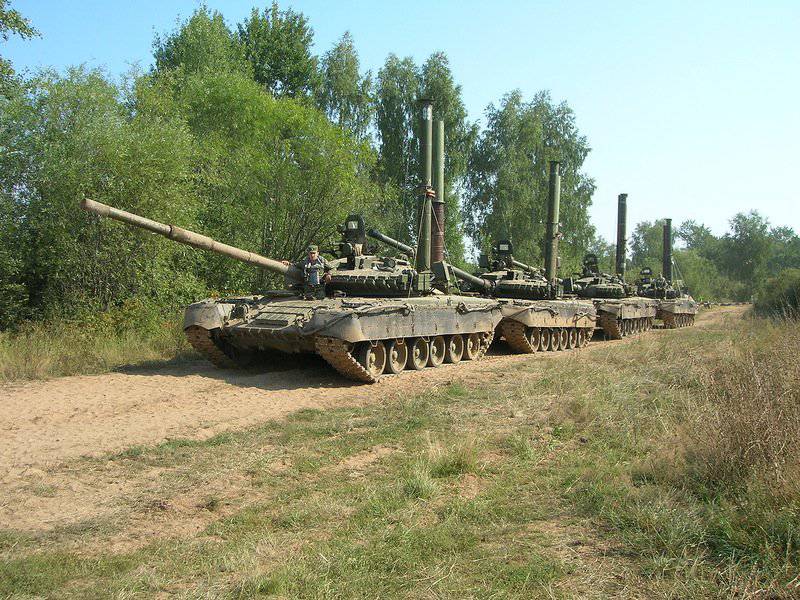
21.
BREM-1 at the ready for the rescue of possible drowning
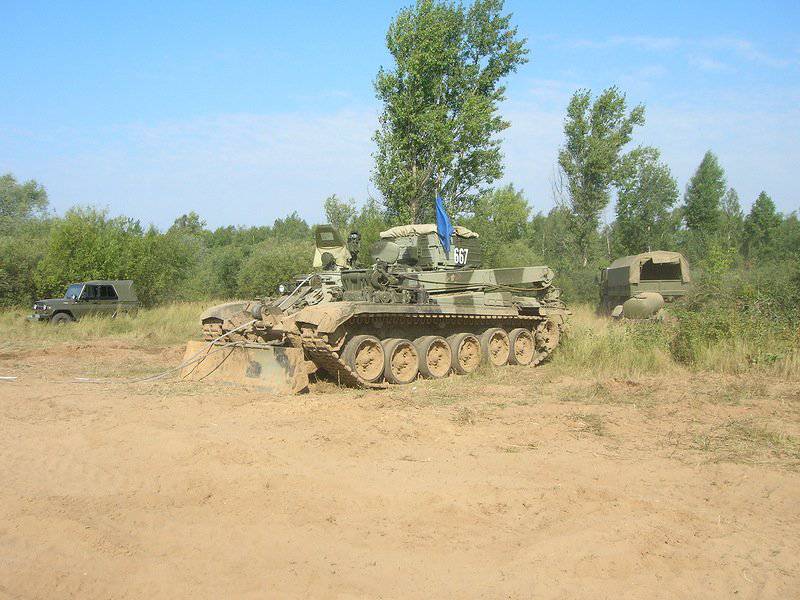
22.
River. Boats are on duty, TCP is at the ready
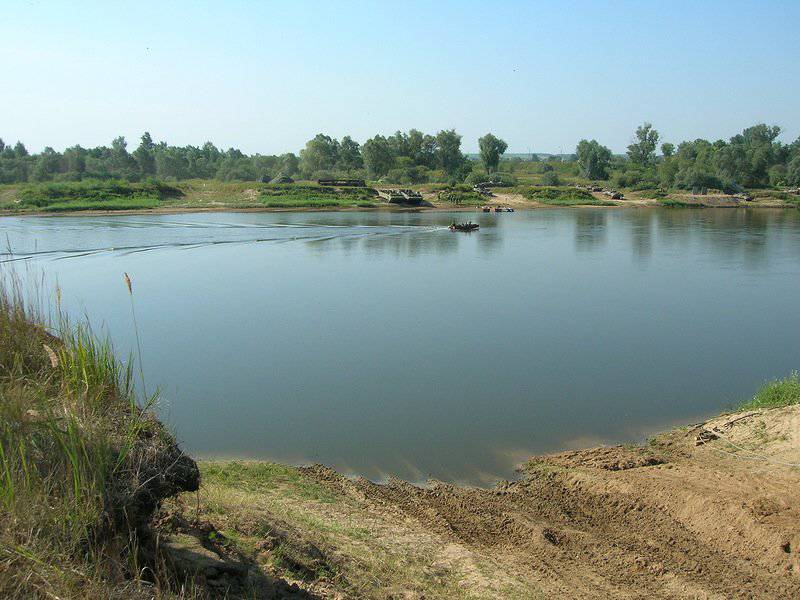
23.
The river became shallow, therefore a full immersion does not occur.
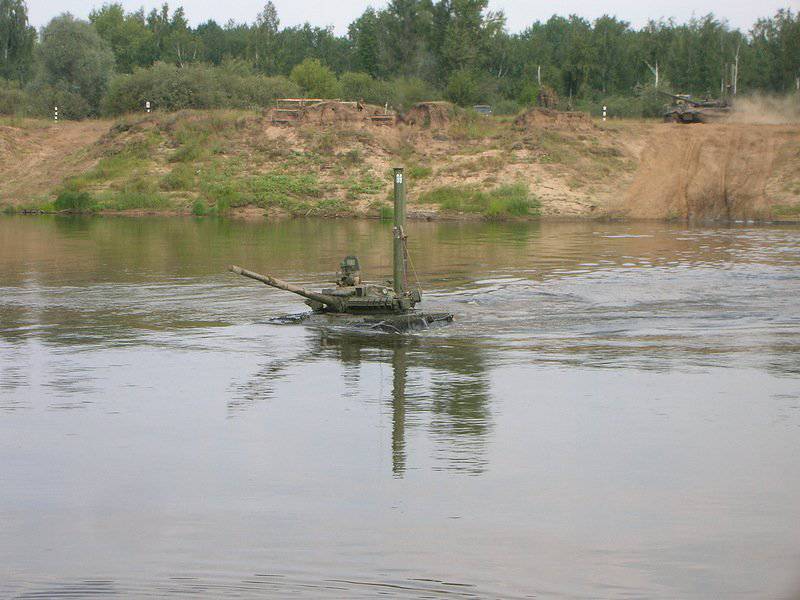
24.
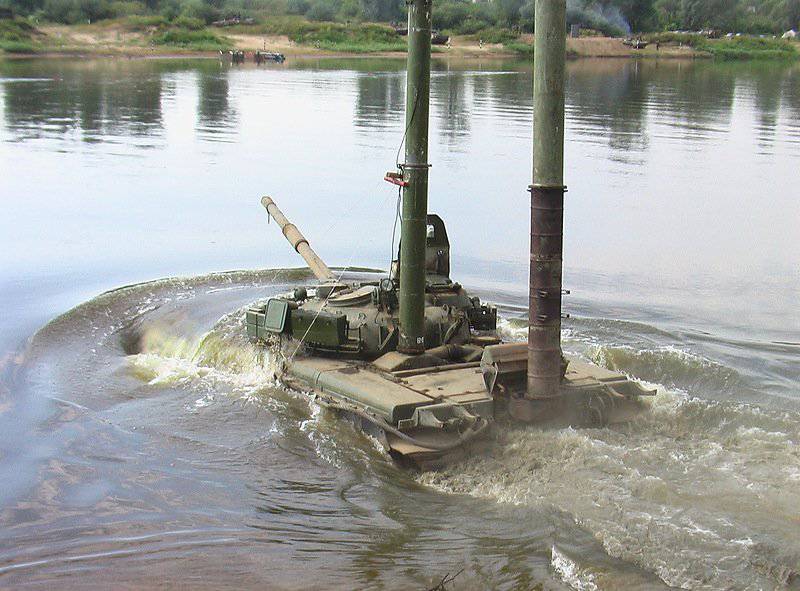
25.
Crossing by a sapper pontoon bridge
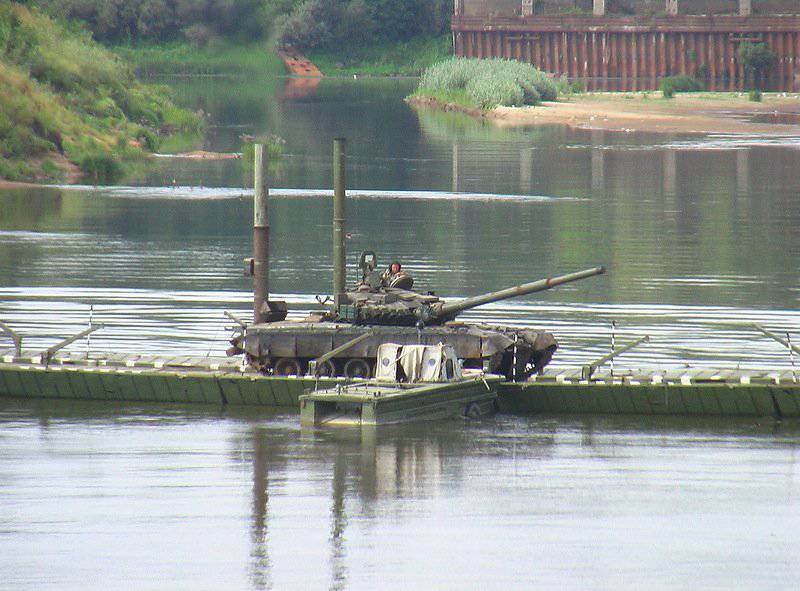
26.
Motorized infantry battalion of the brigade is armed with BMP-2
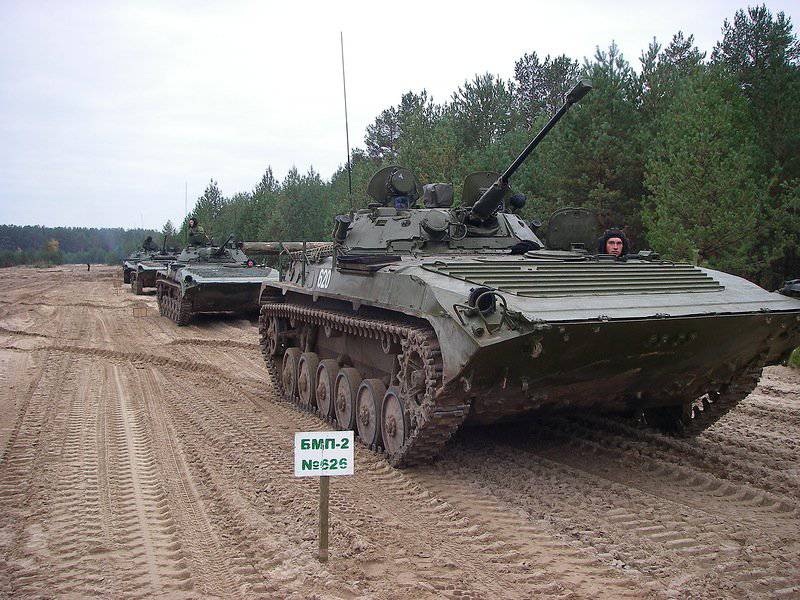
27.
On the teachings
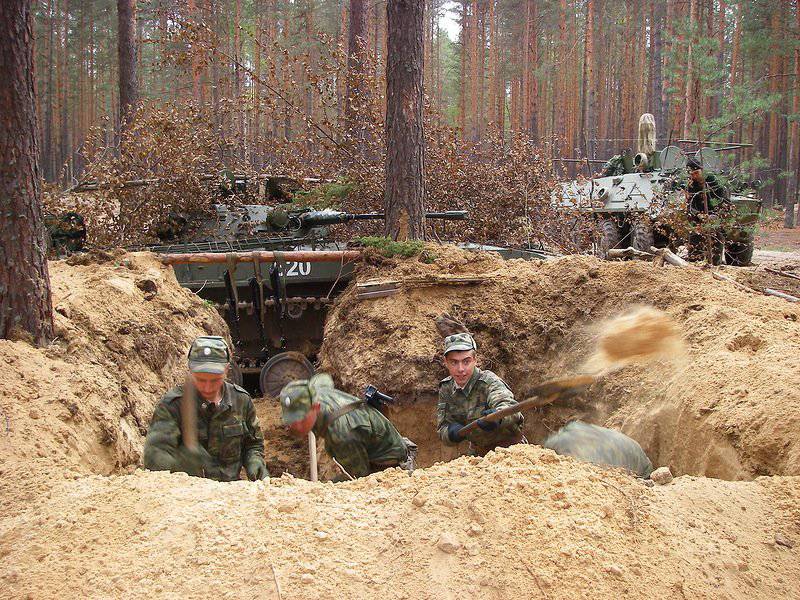
28.
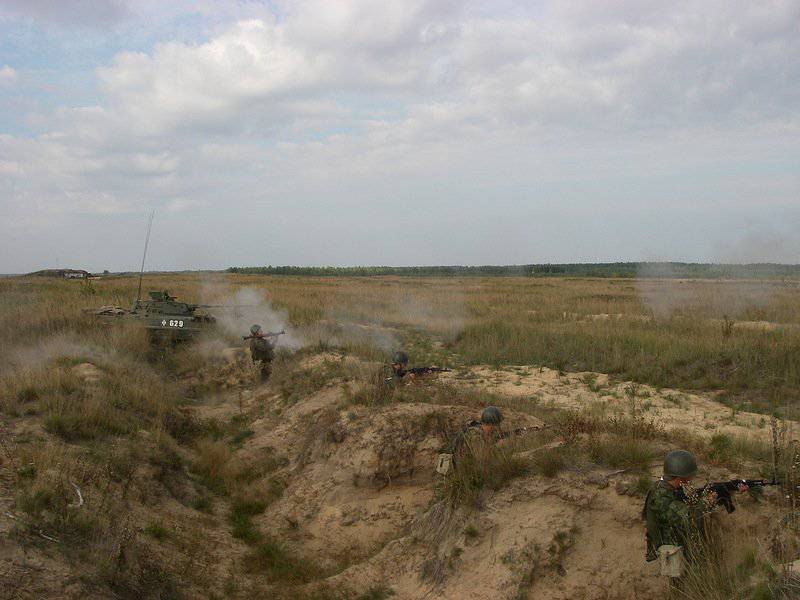
29.
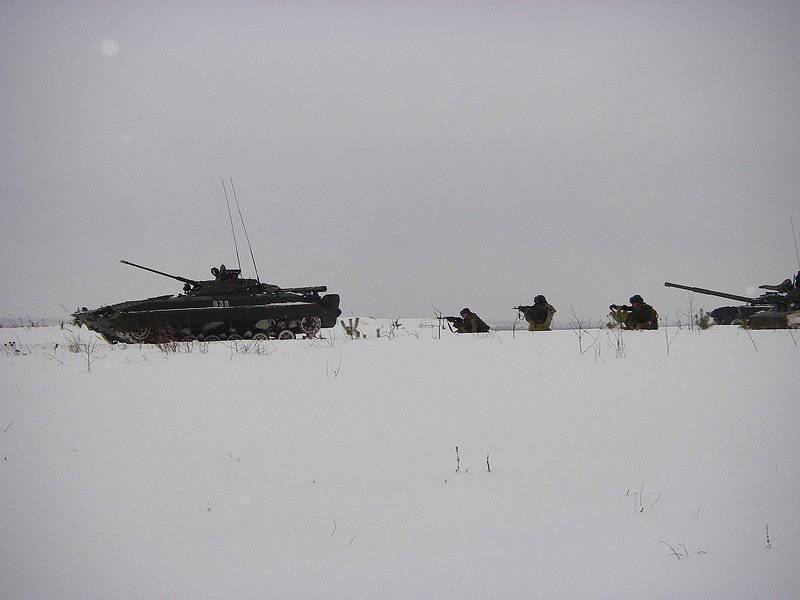
30.
They asked if they were shooting at an anti-aircraft machine gun. Work out. But if you have to shoot him, then, most likely, at ground targets. NSVT good in mountainous and wooded areas in urban areas
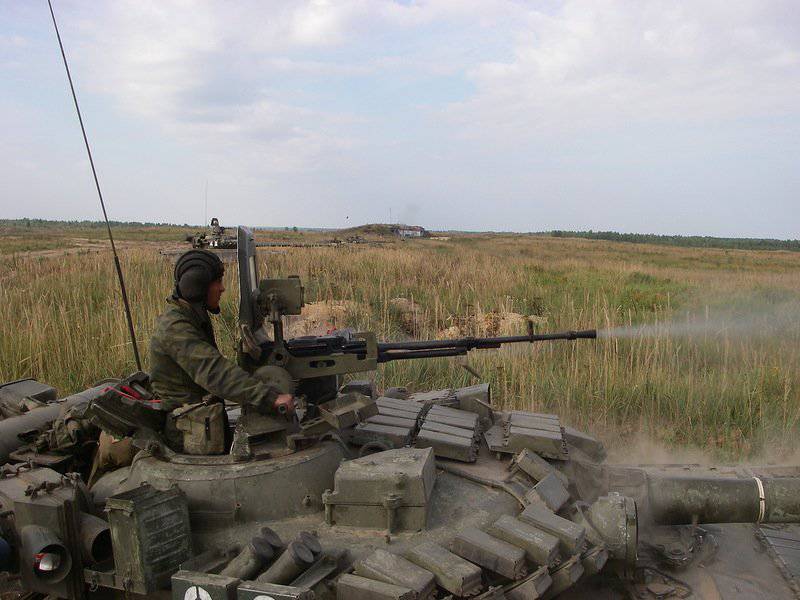
31.
We don’t walk in tank-mode anymore, there’s enough fuel to properly work out the tasks, and you don’t also need to save ammunition. Separately pleased with the communication with the soldiers-conscripts, because they were happy to say that they practice often, constantly on the technique, regular shooting. The entire crew is trained in interchangeability. Tank-guided missiles are also fired.
I remember that you asked about the types of shells used in the brigade, but this is not the kind of information that you can write. The FSB department in part works so well that even completely unclassified things I often refused to report. The first time I encountered such total observance of state secrets.
There was a question about fighting at night. Since the T-80BVs are not equipped with thermal imagers, a full-fledged battle at night is possible only with a regular artillery battalion of lighting shells hanging over the scene of the clash.
Preparations for the battles in urban areas is carried out.
Personal protective equipment such as tank armor and armored helmets in the brigade yet.
Brigade artillerymen, by the way, are also firing projectiles. What is not ordered to speak (secret!), But for "Msta" he is easily googled;)
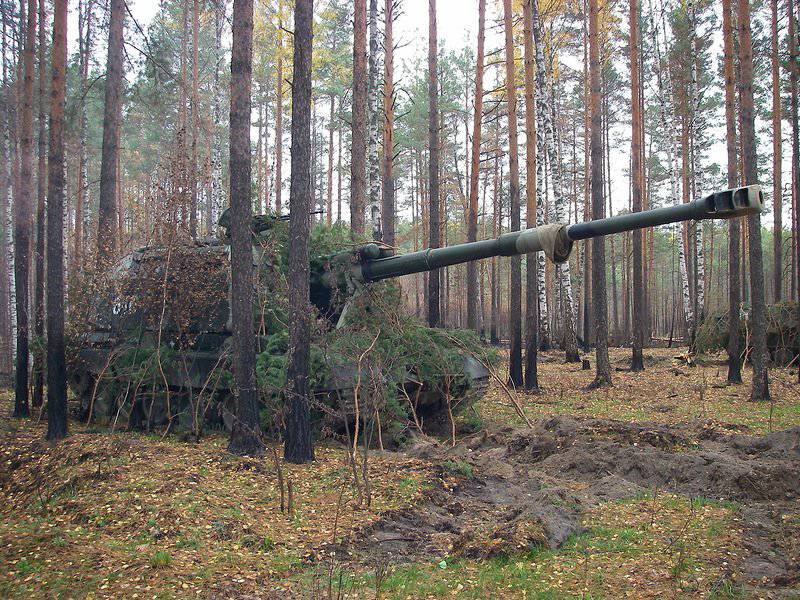
32.
I was given quite a lot of photos from the exercises, but, unfortunately, the troops do not equip us with good cameras, so people used simple soap dishes. As a result, for example, photos of firing of the jet division look like this:
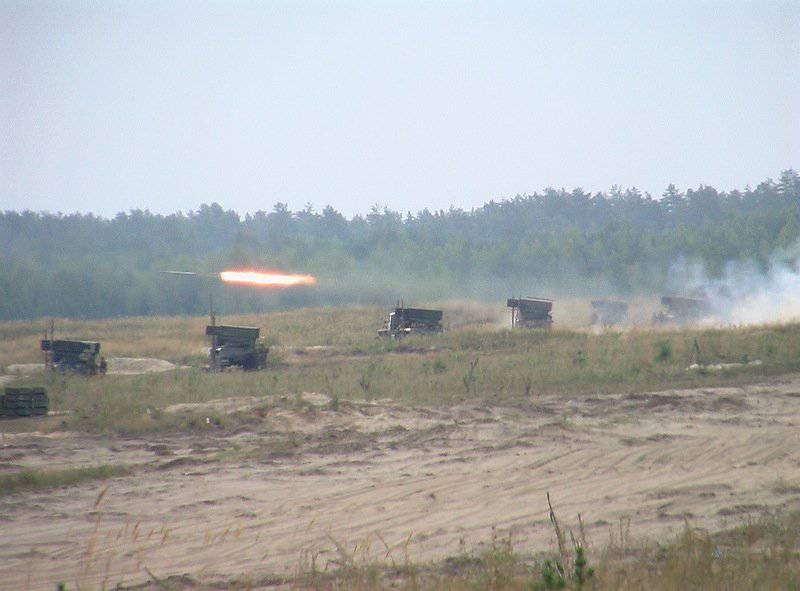
33.
Teachings in the winter. Brigade's anti-aircraft gunners (in the photo the 2K22 Tunguska anti-aircraft missile system and the 2F77М transport-loading machine)
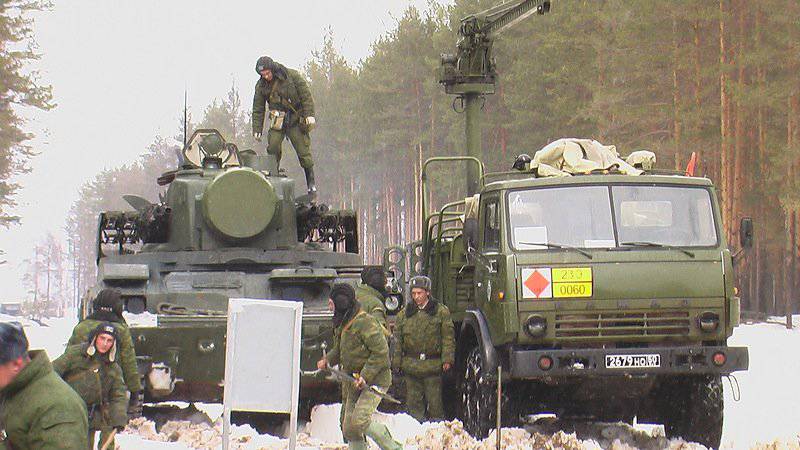
34.
Change of boxes with ammunition to 30-mm Tunguska submachine guns
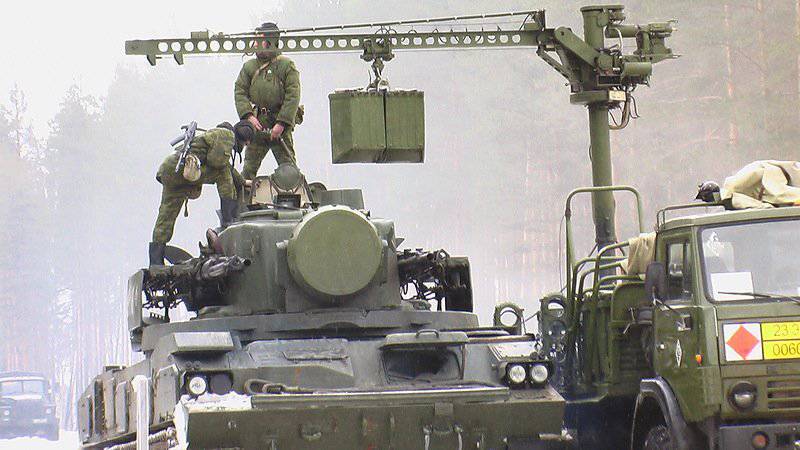
35.
Communication in the brigade is represented by various machines, like the old P-145 type BM "Chaika" based on the BTR-60
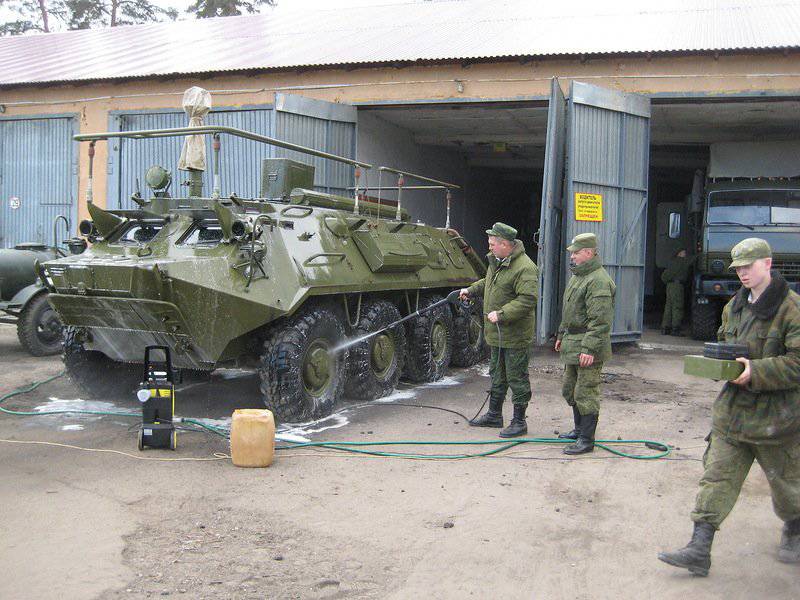
36.
So newer
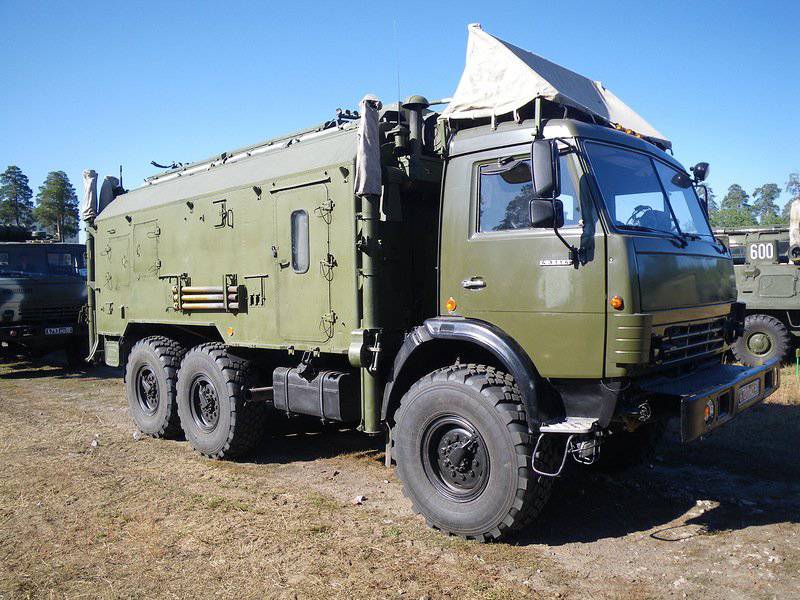
37.
And modern, production concern "Sisprom". These machines are included in the Acacia automated control system. Details, due to the increased observance of secrecy in part, will not, but at least allowed to take pictures outside :)
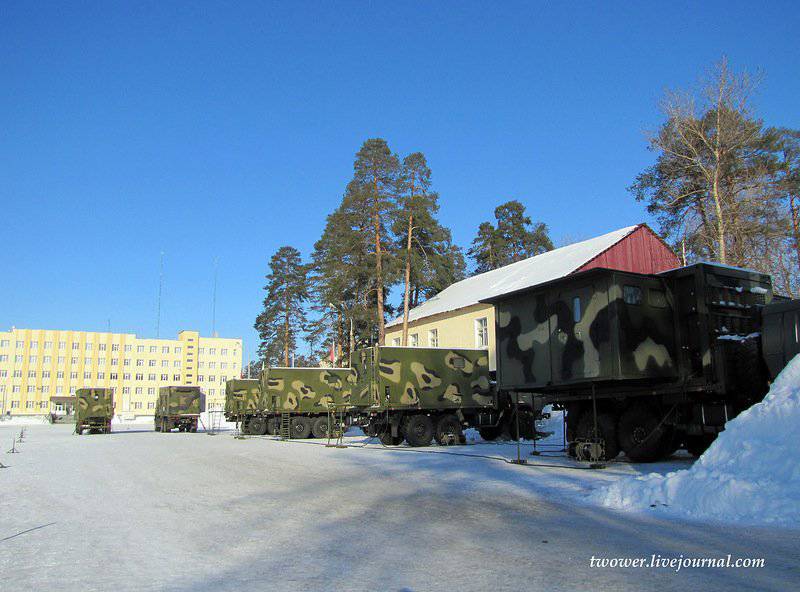
38.
Staff module MSH.4.3.009
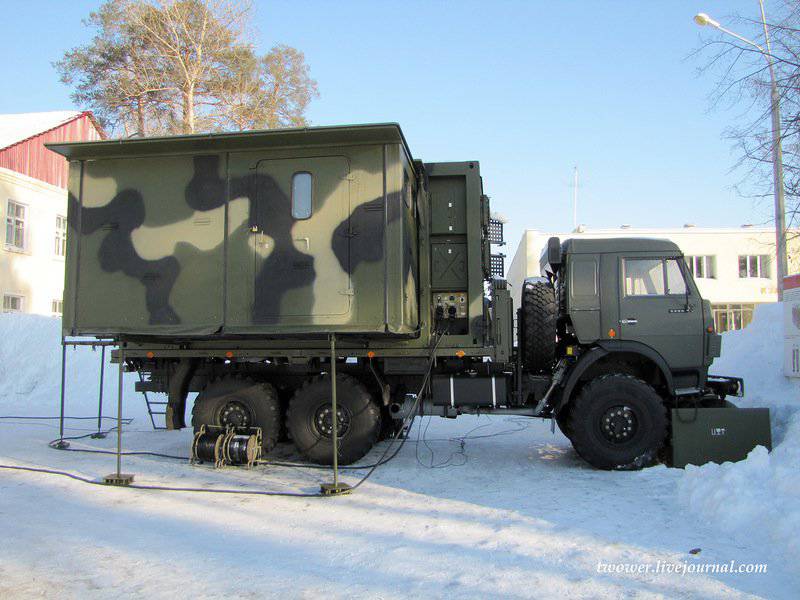
39.
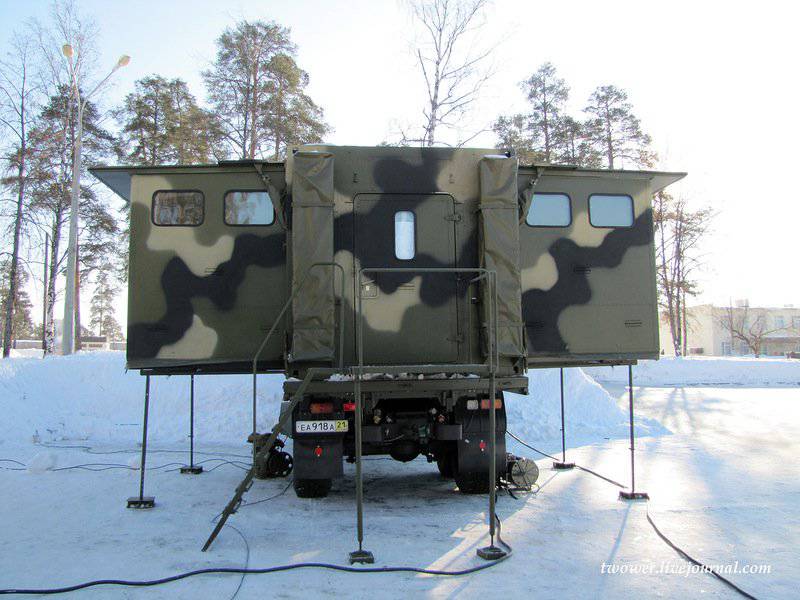
40.
Staff module MSH.4.2.
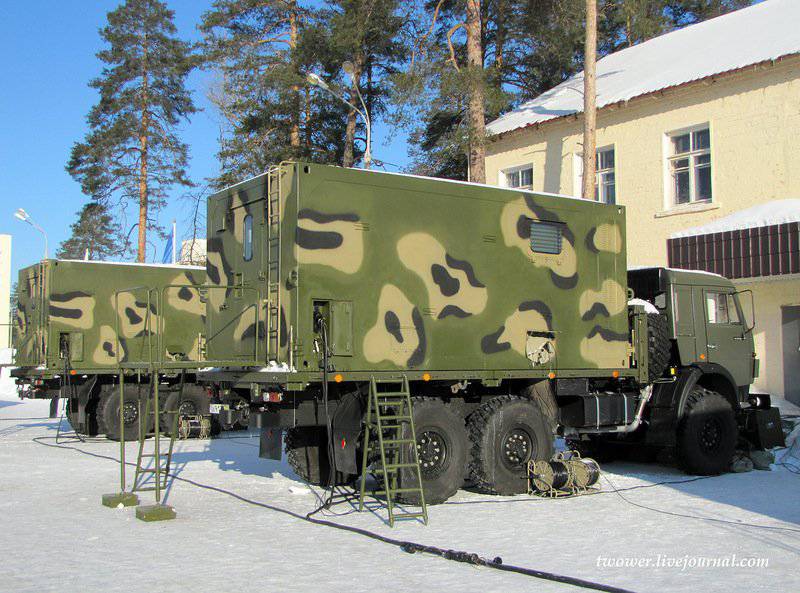
41.
Machine with power supply module
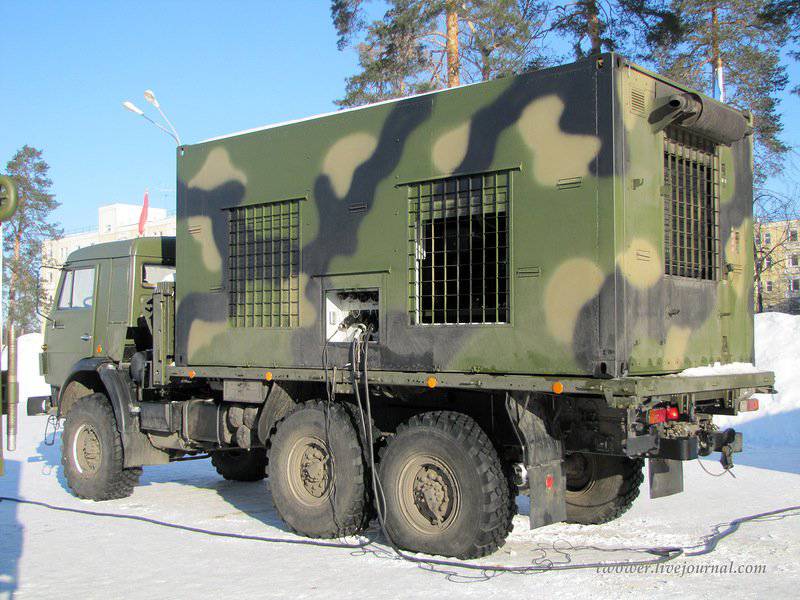
42.
Repair-evacuation vehicles of the BREM-1 type in the brigade are new, manufactured by the manufacturer in 2009 year.
Car parked on duty equipment in the fall
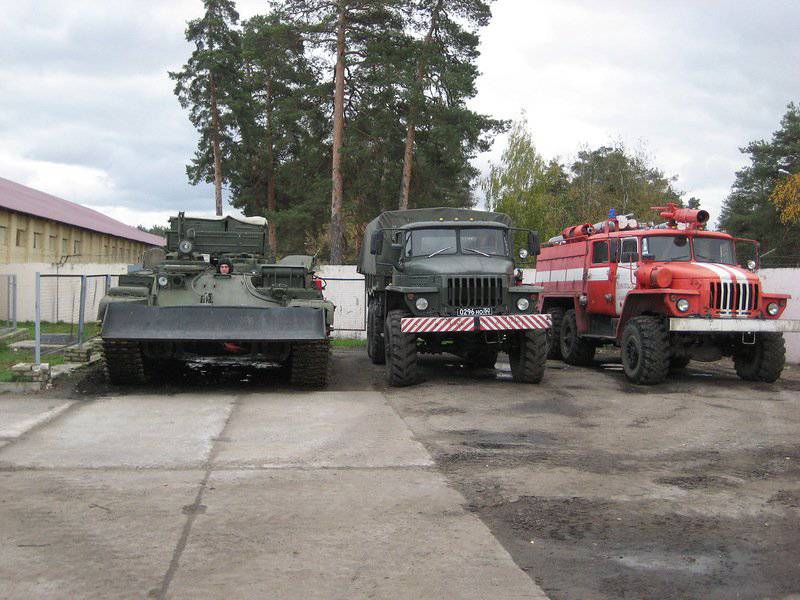
43.
And this January
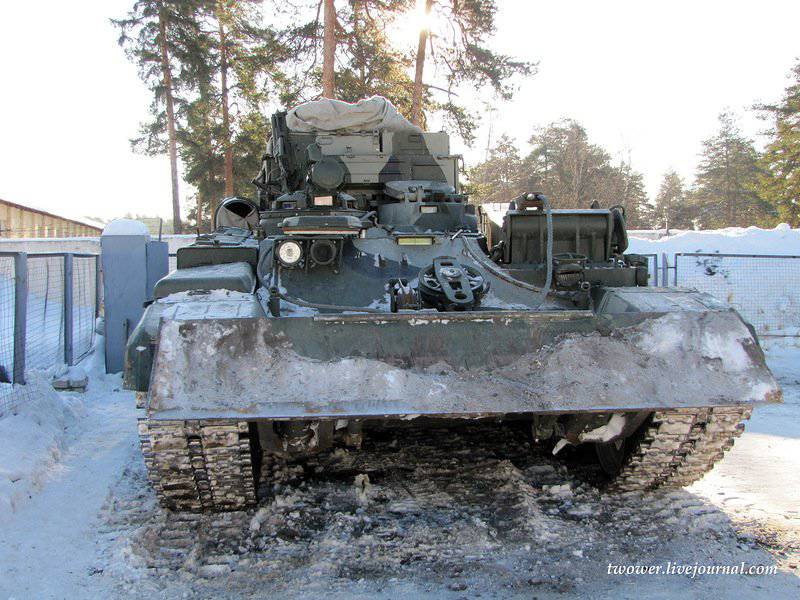
44.
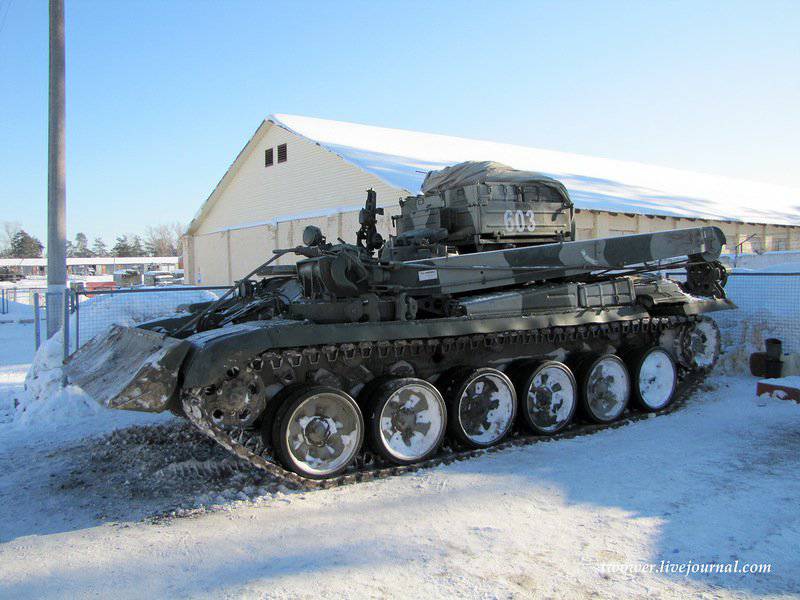
45.
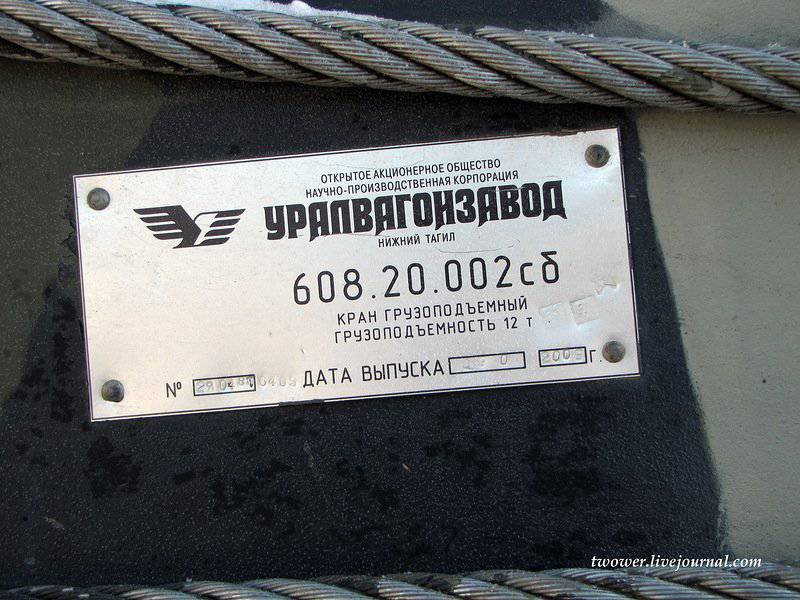
46.
Little tour inside.
Driver's seat
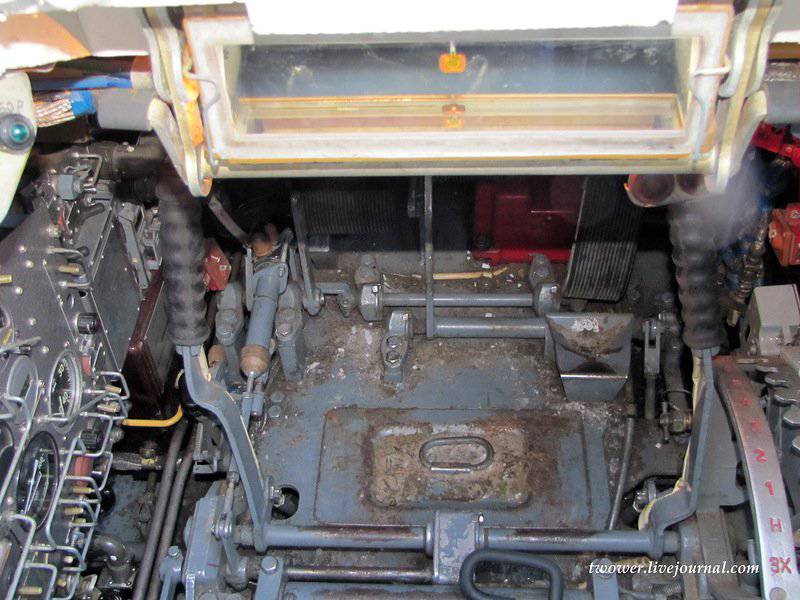
47.
Left view
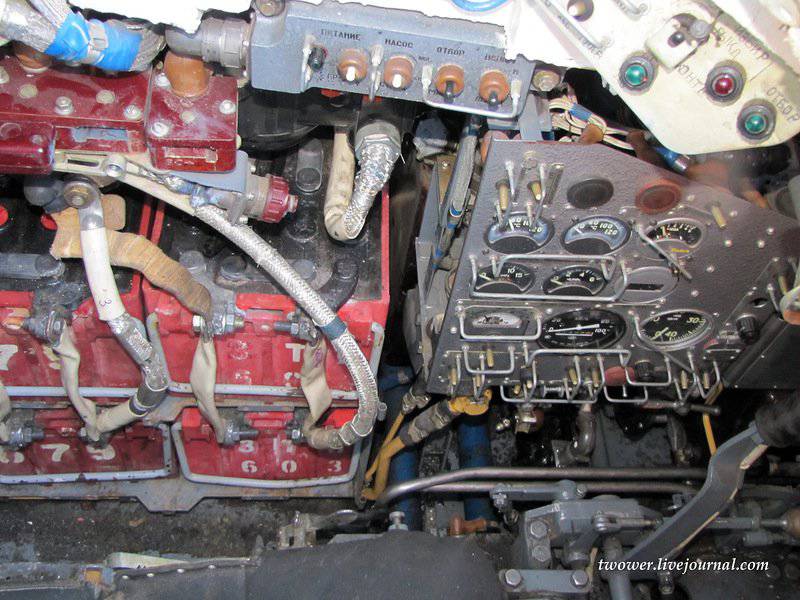
48.
Right down view
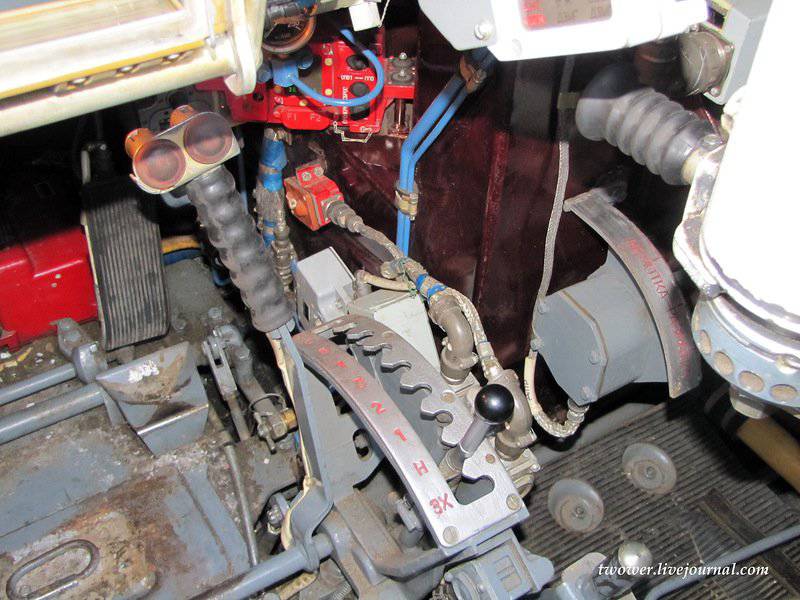
49.
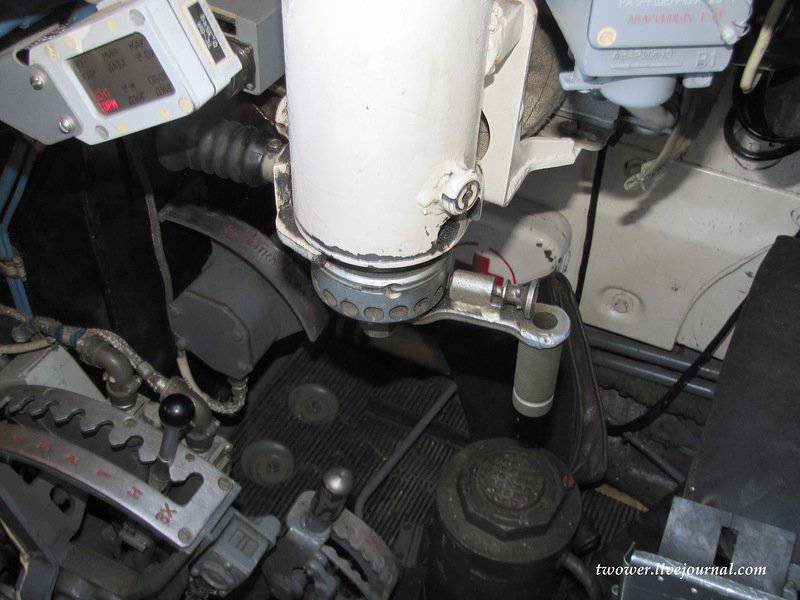
50.
Place commander cars
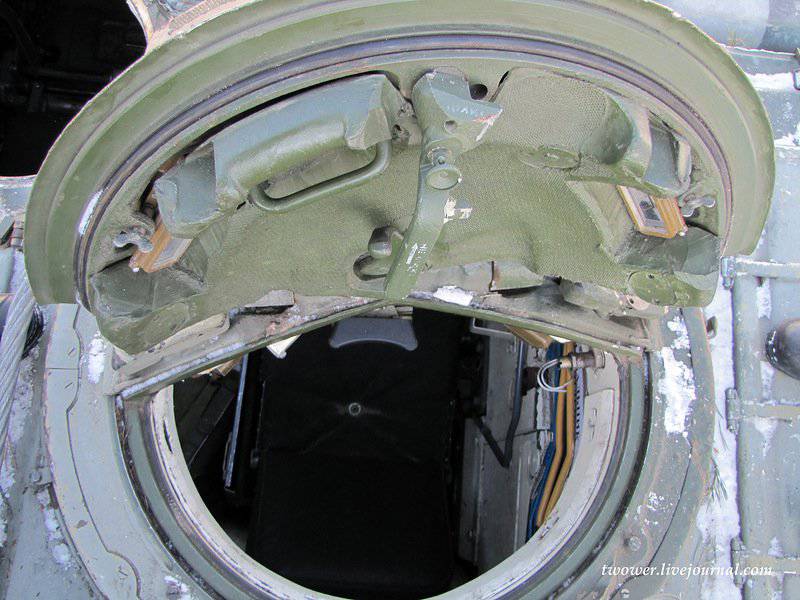
51.
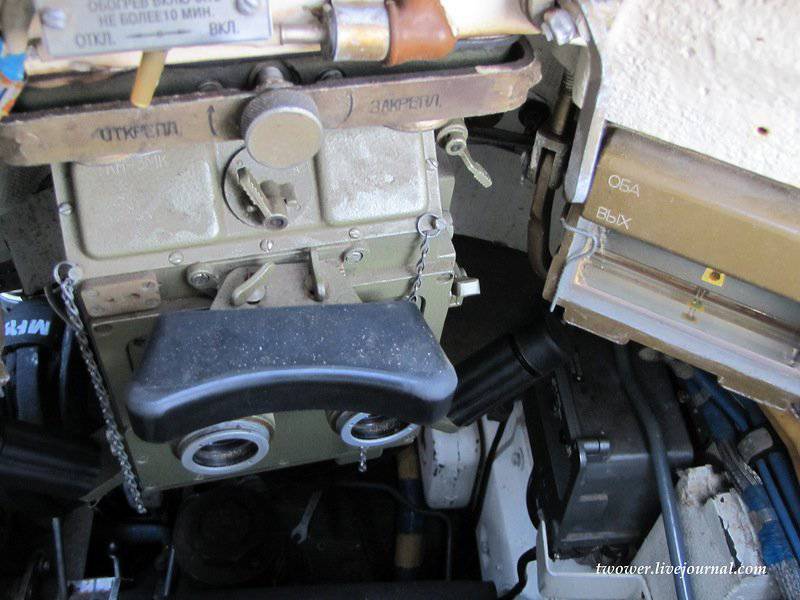
52.
View to the left down on the mechvod seat
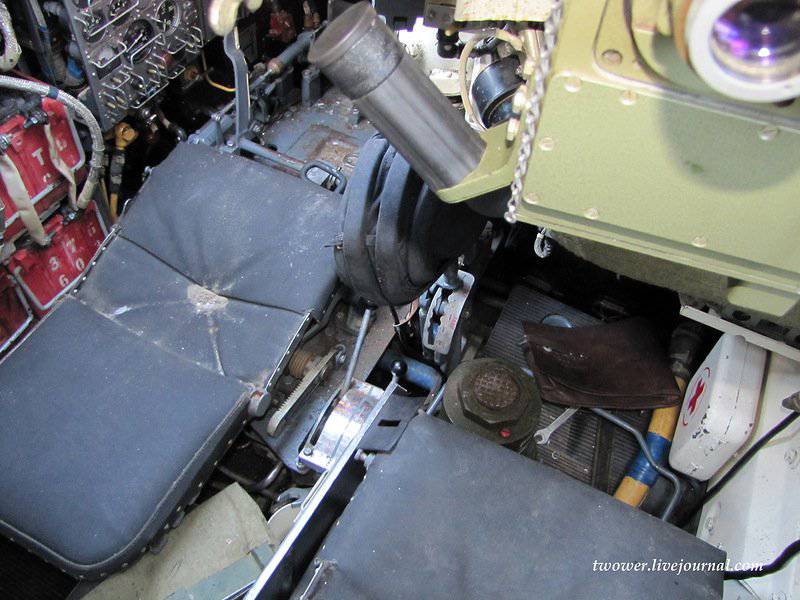
53.
View straight down
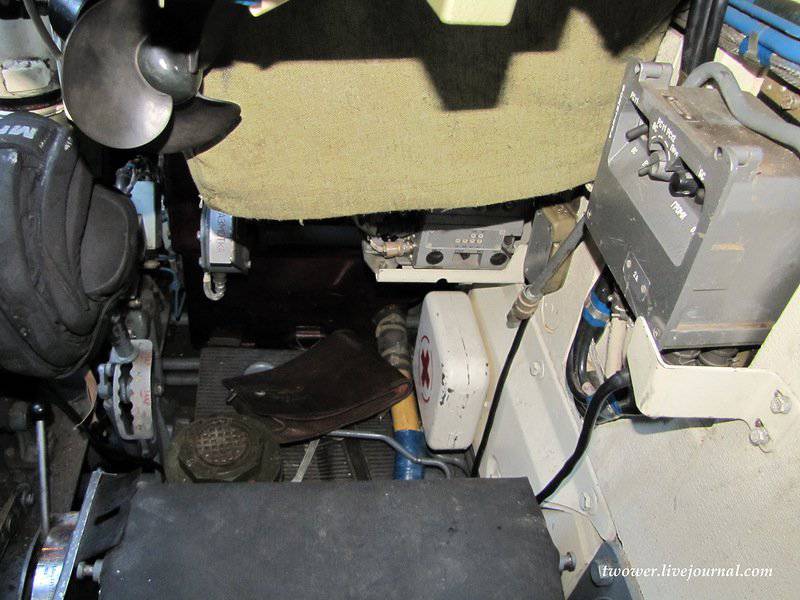
54.
Right view
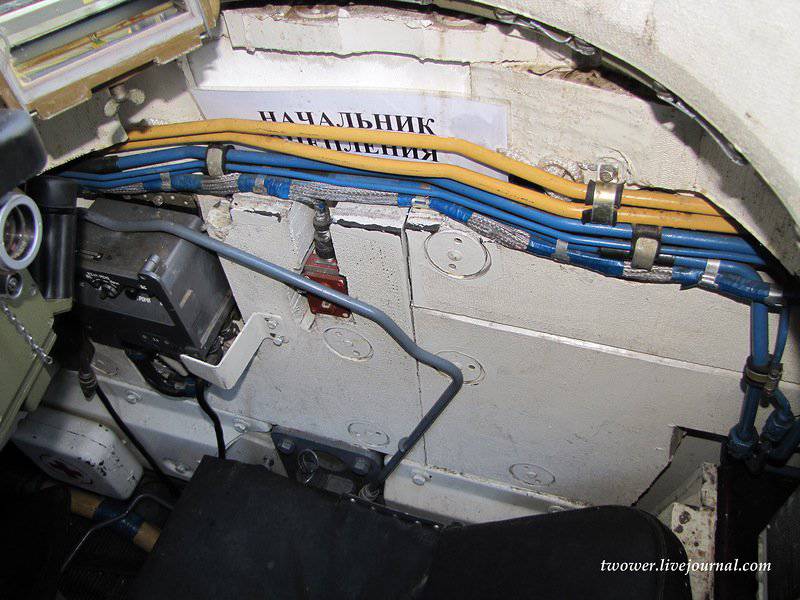
55.
Back view
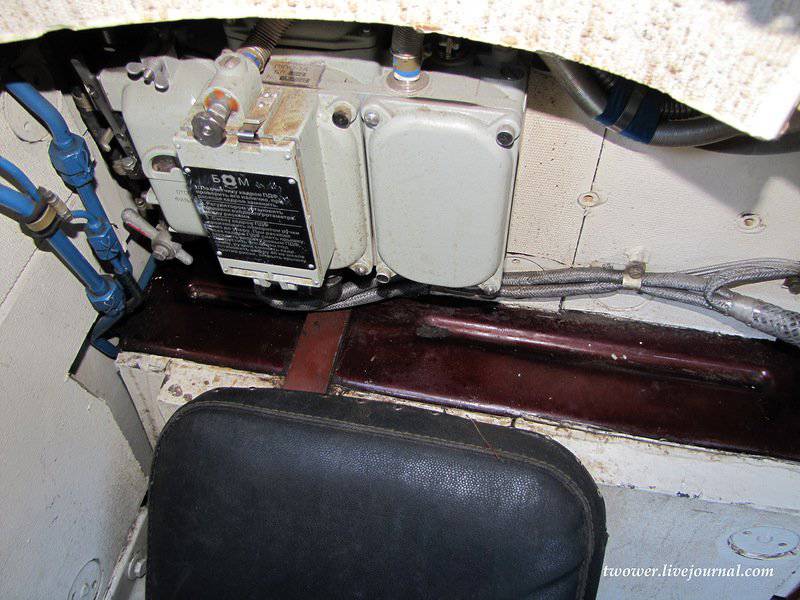
56.
View back left
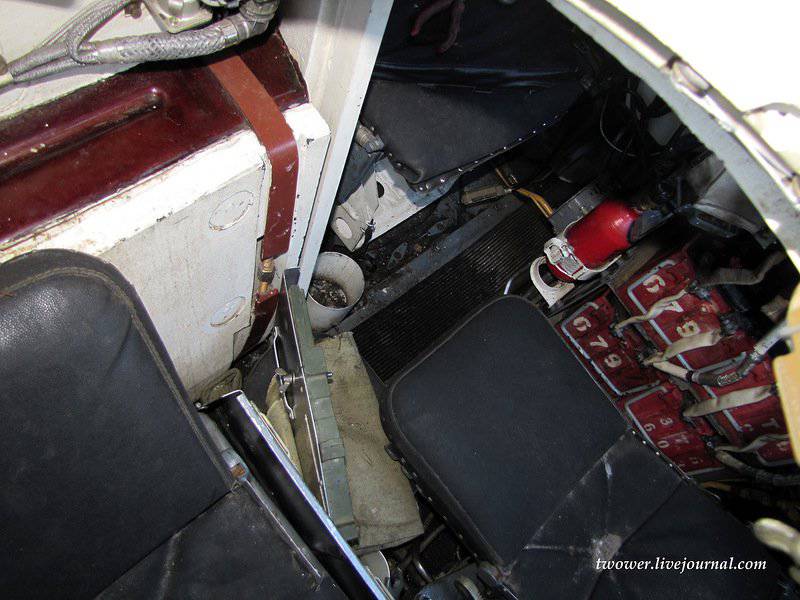
57.
Place of the coupler-rigging manager of the crane boom
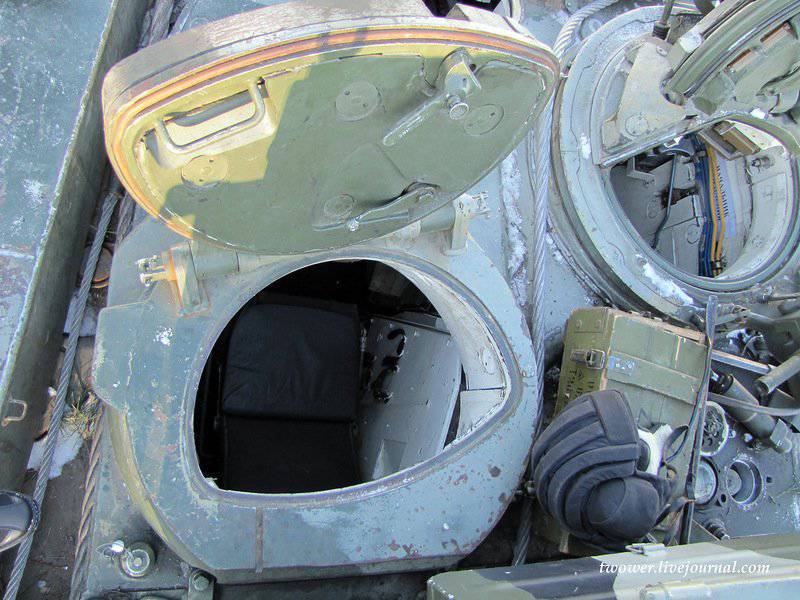
58.
View forward down
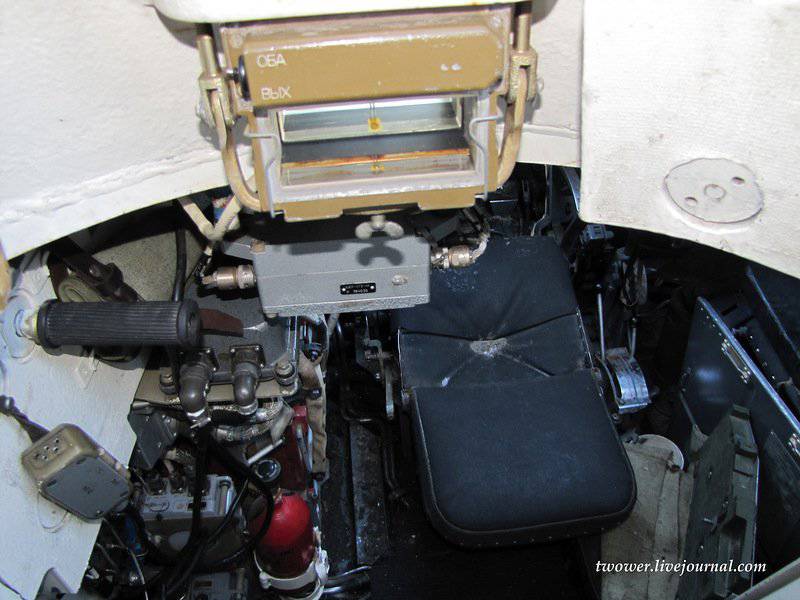
59.
Boom Control Panel
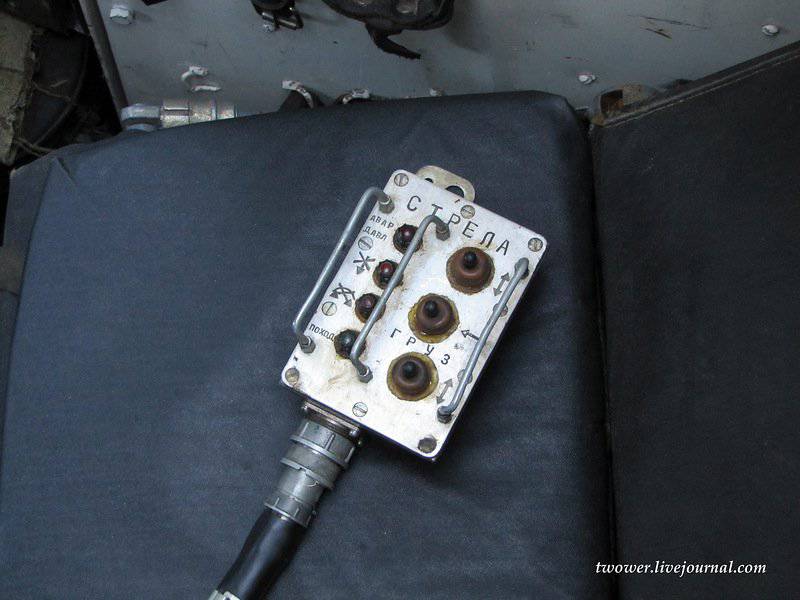
60.
The RCBB brigade unit also recently received a reconnaissance chemical machine РХМ-4 based on the BTR-80
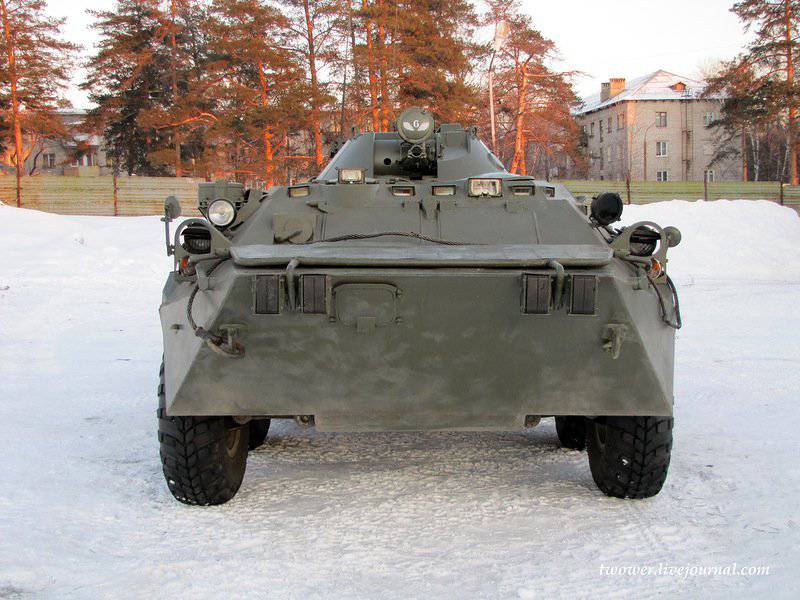
61.
Machine guns shot while the car was in the park
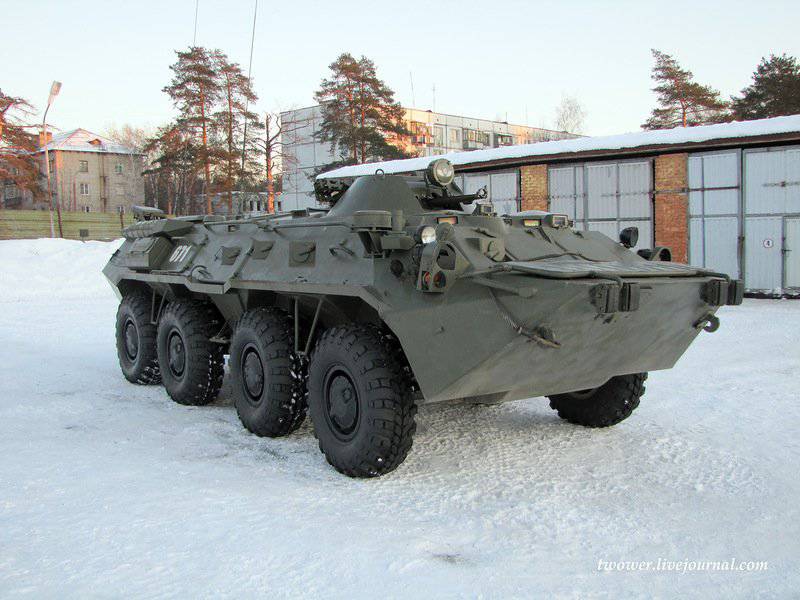
62.
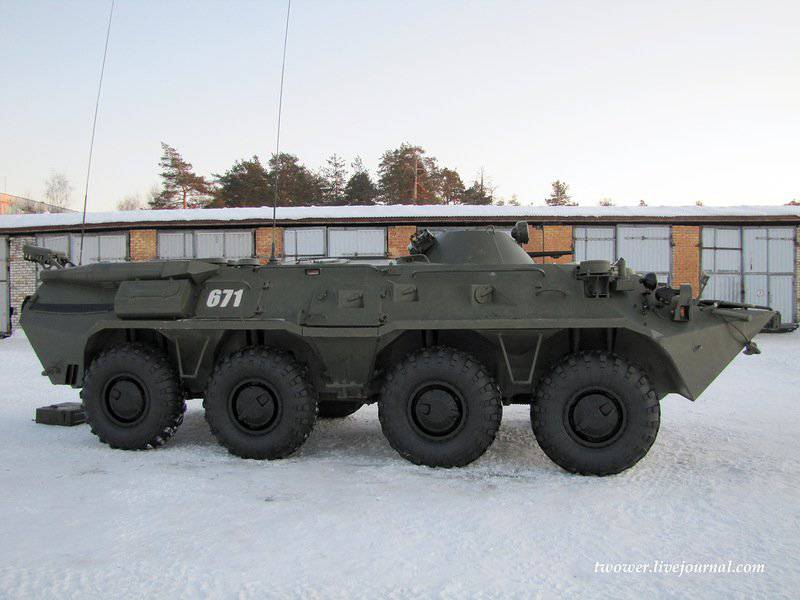
63.
In the box, the flags that indicate the contaminated area
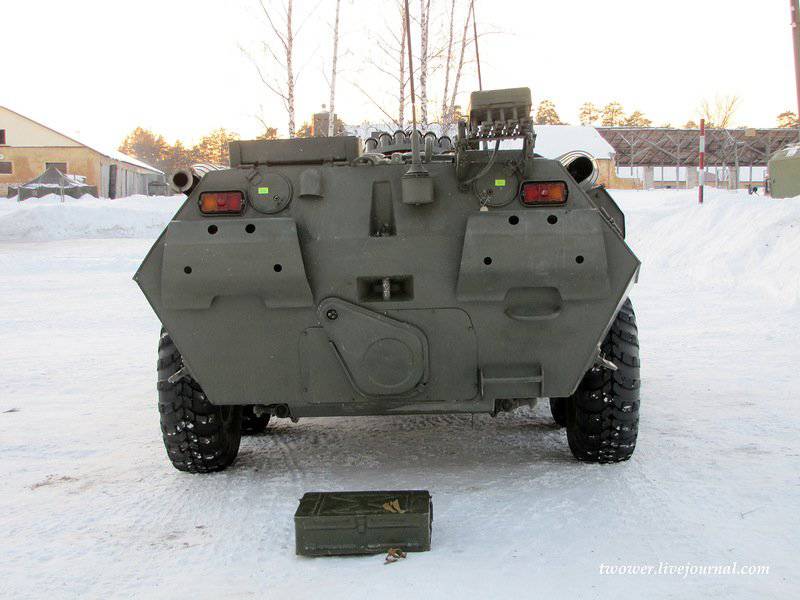
64.
The principle of operation is as follows: from the inside they pressed the button - the flag was stuck in the ground (the photo was taken from u_96 from here)
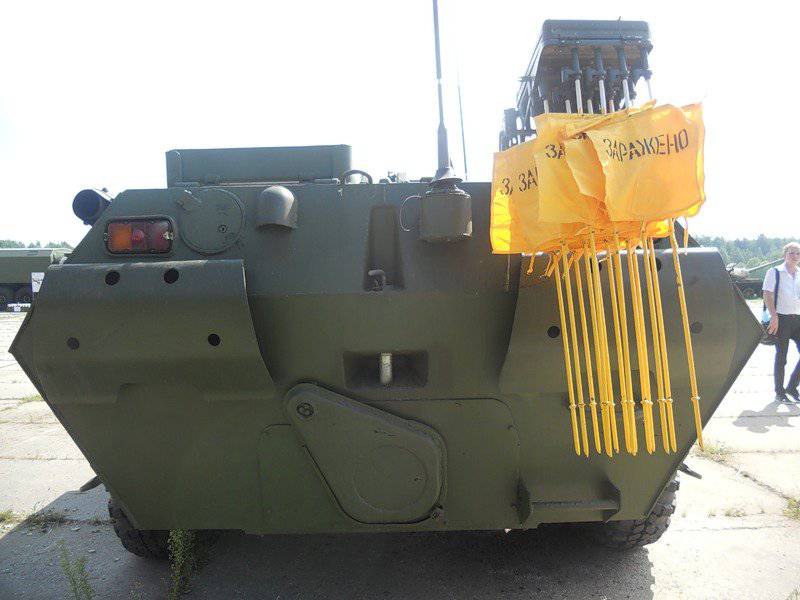
65.
I didn’t limit myself only to external examination and climbed inside.
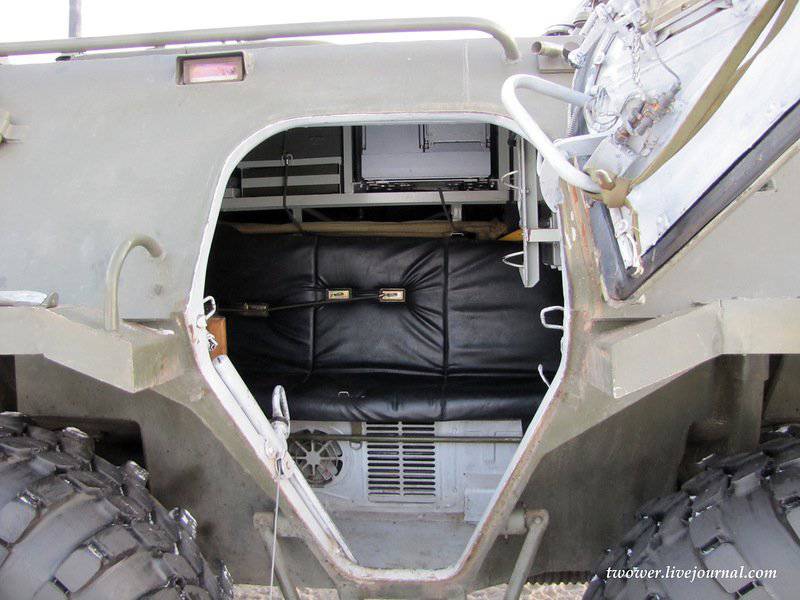
66.
Place the landing on the right
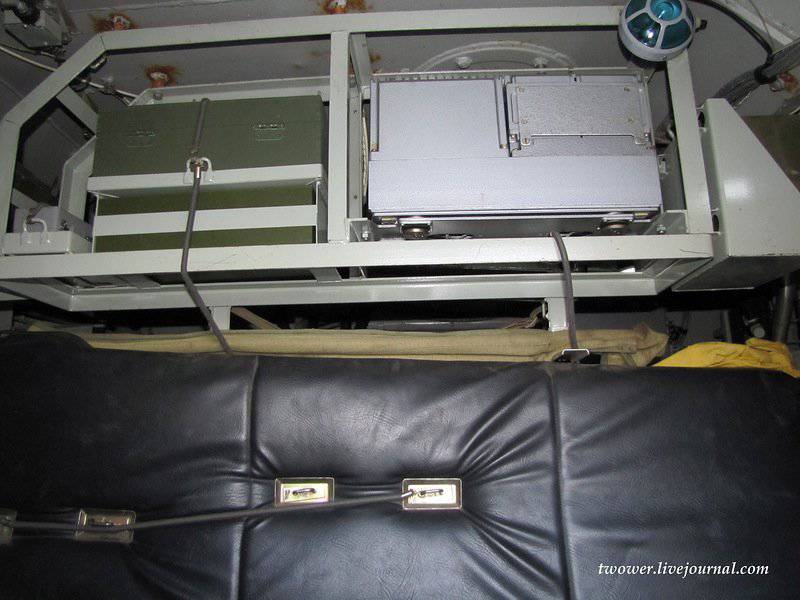
67.
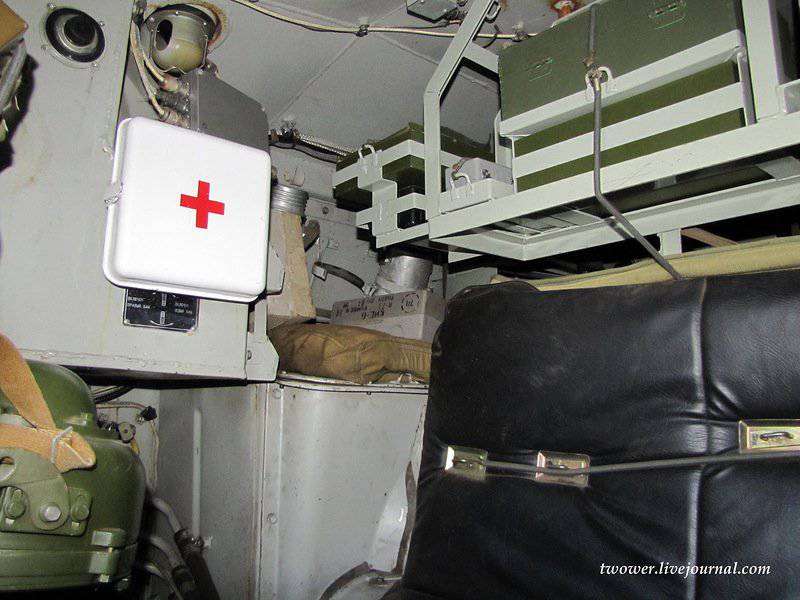
68.
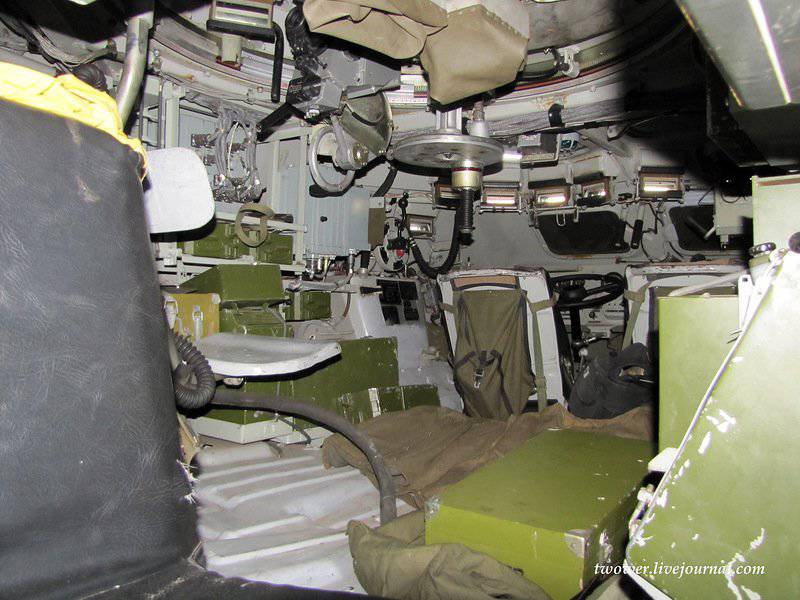
69.
KPVT gunner's seat and PKT
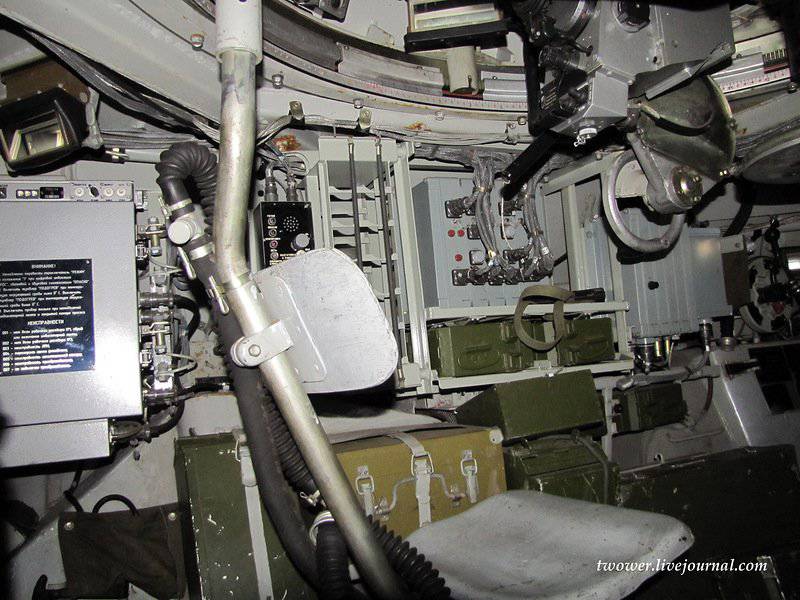
70.
Troop compartment on the left
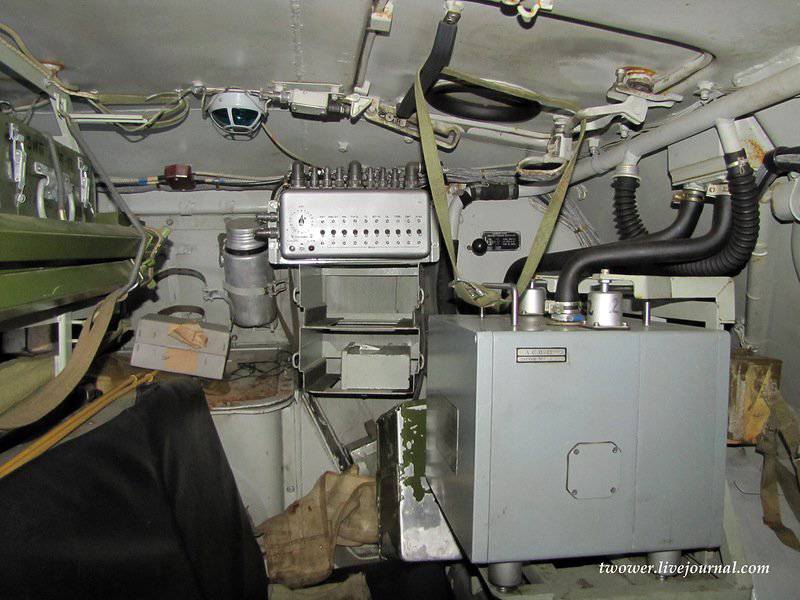
71.
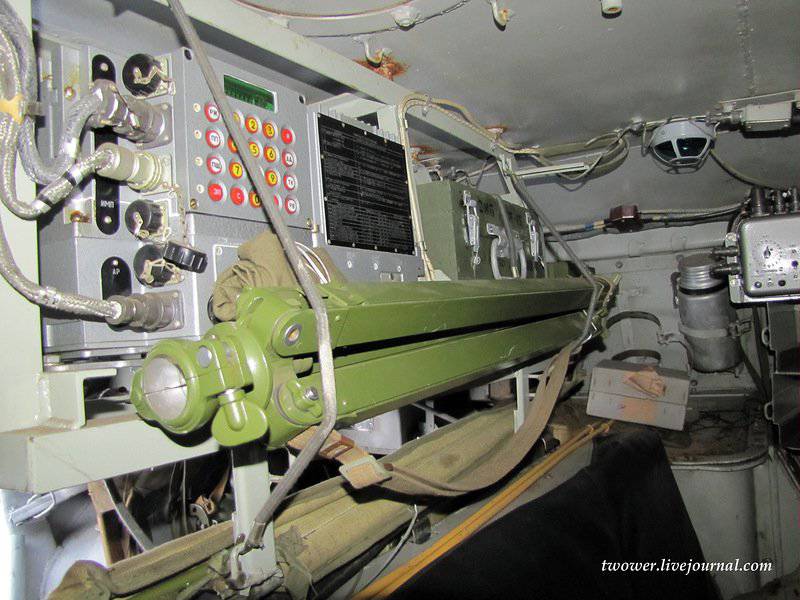
72.
Let's go ahead
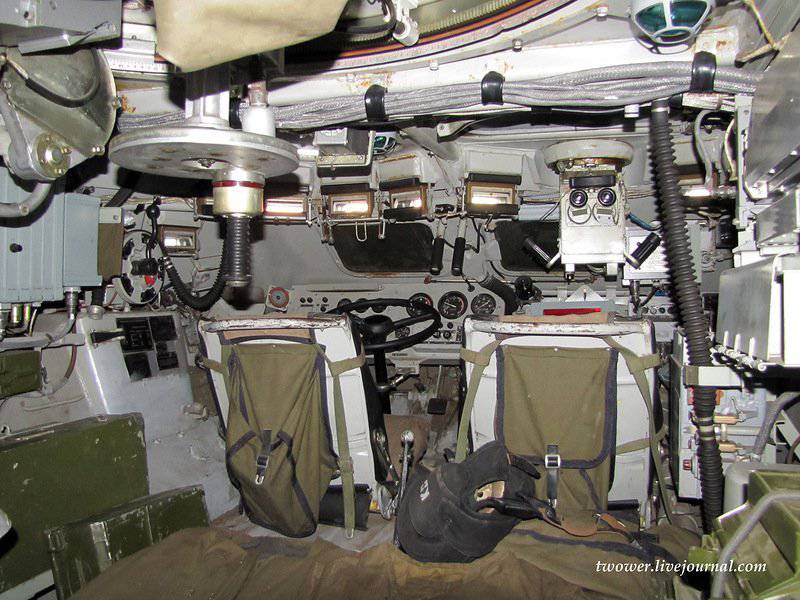
73.
Driver's seat
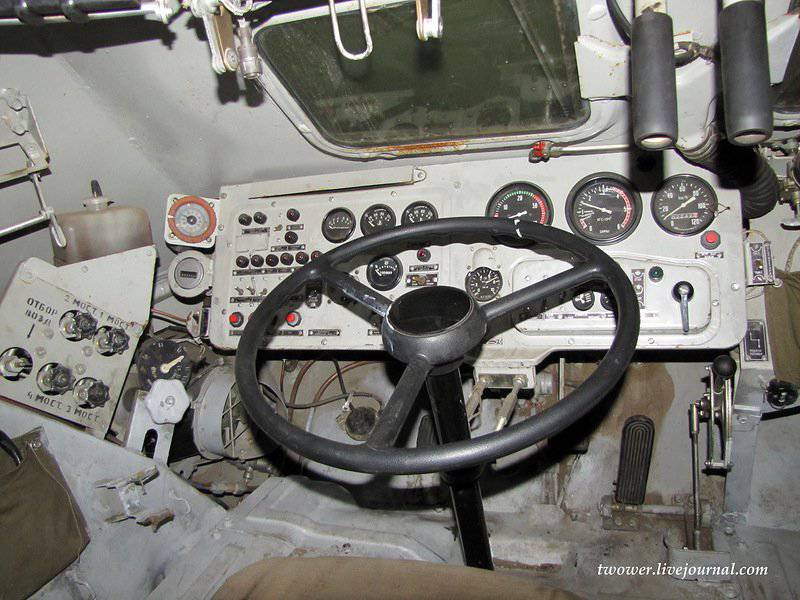
74.
Place commander cars
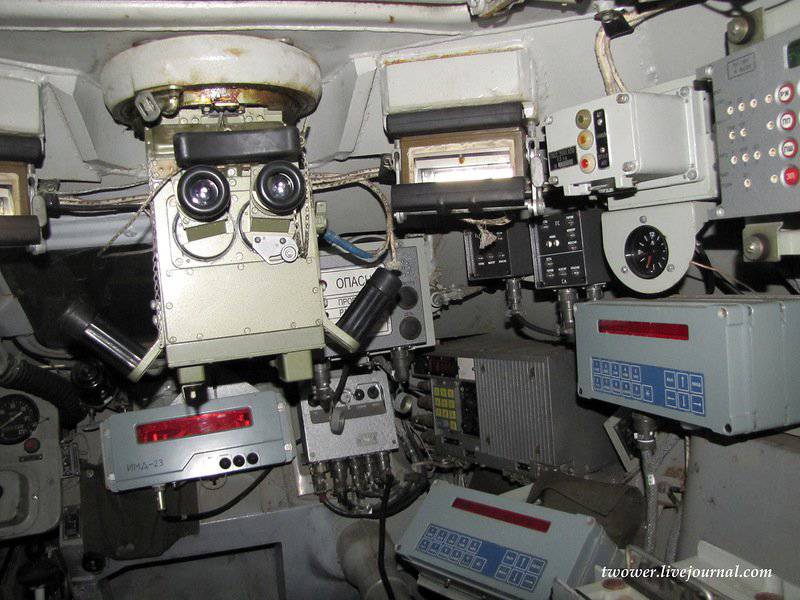
75.
Inside view to starboard
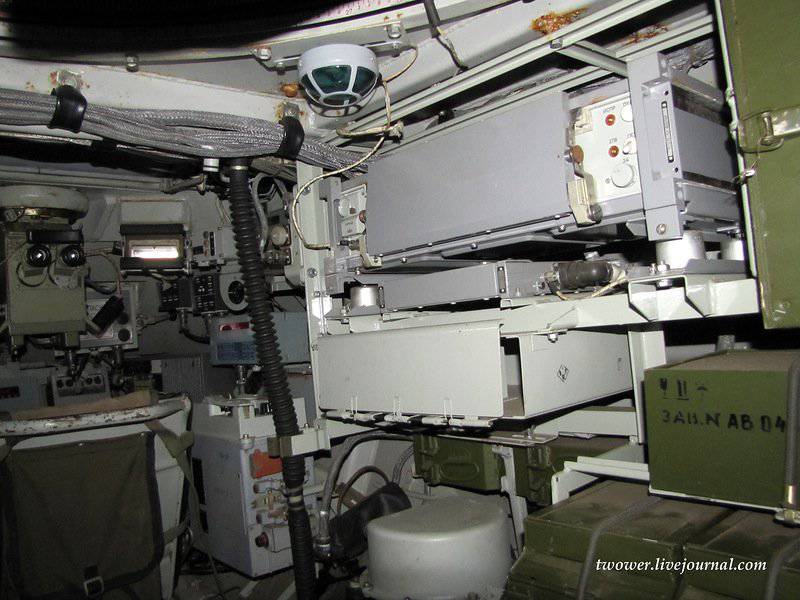
76.
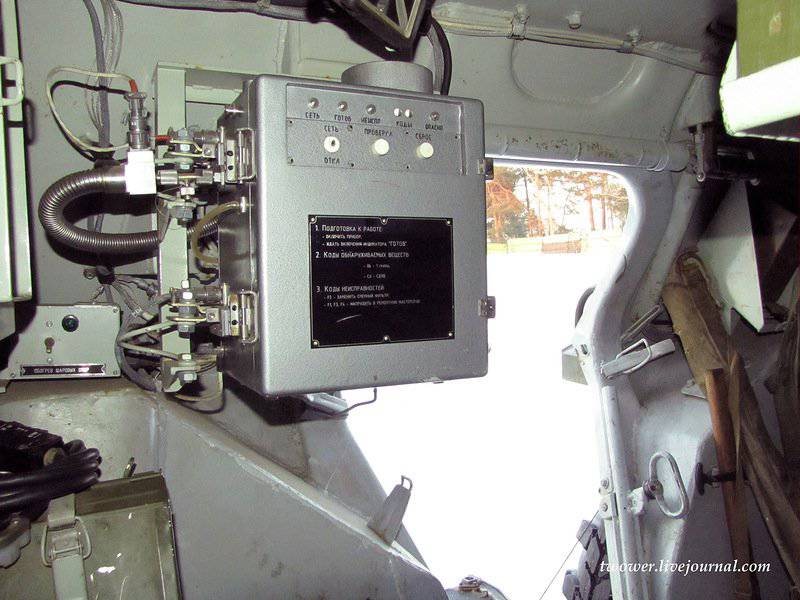
77.
One of the main sorrows - I was not told that in the brigade there is a fighting machine of flamethrowers - BMO-T. Already at home, sorting through the photo, I found it, captured during the exercise. If he knew that she was in the brigade, he would have filmed everything from the inside: (
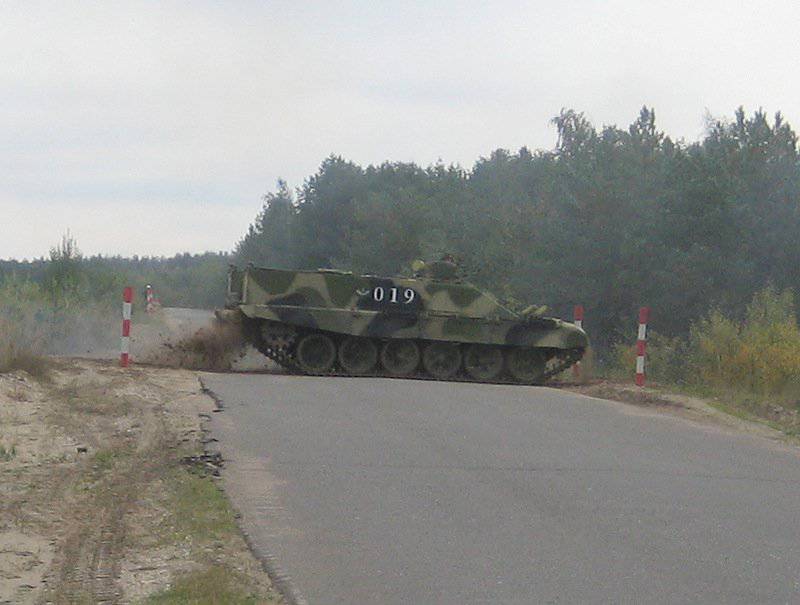
78.
Automotive technology has not yet been completely replaced by a new one, there are also GAZ-66 and ZILs, but new URALS and KAMAZ vehicles are available.
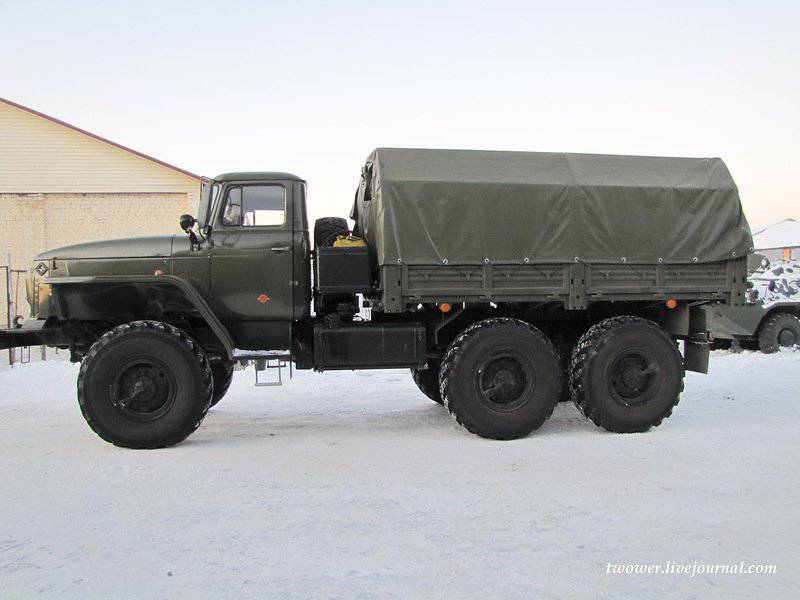
79.
New KAMAZ so-called. secretaries - the secret part of the brigade
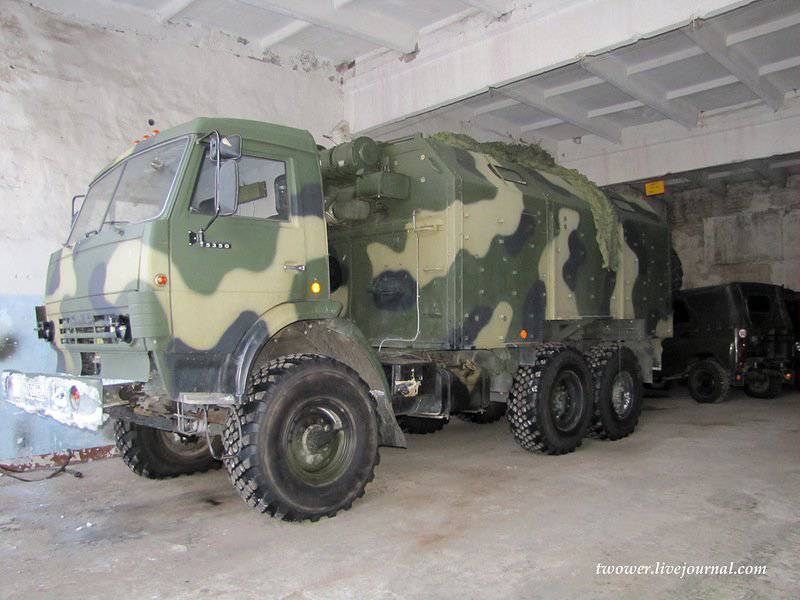
80.
Provisioning units for training.
Refueler under camouflage net
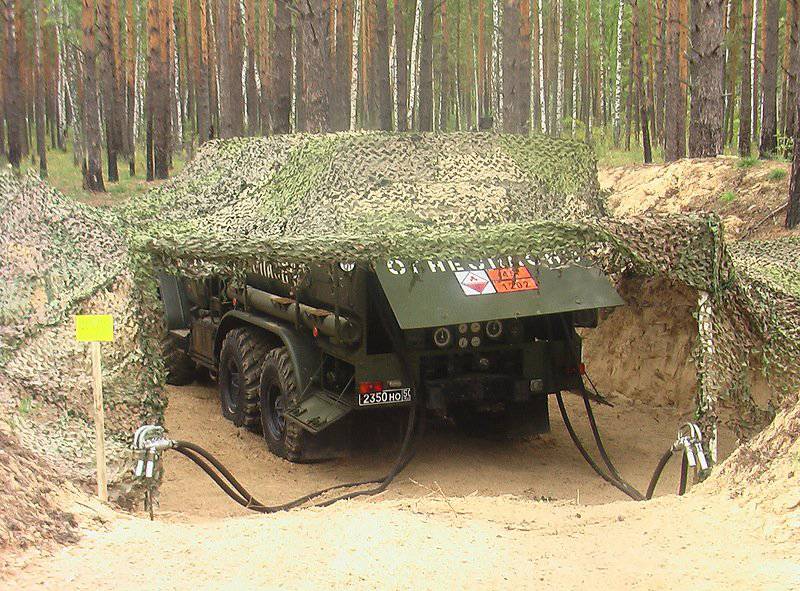
81.
Field kitchen. Although the brigade is provided with food by a civil organization (more on this in the next section), the brigade support units feed the field outlets. Twice a week at the military cooks in terms of classes at the point of permanent deployment control cooking food
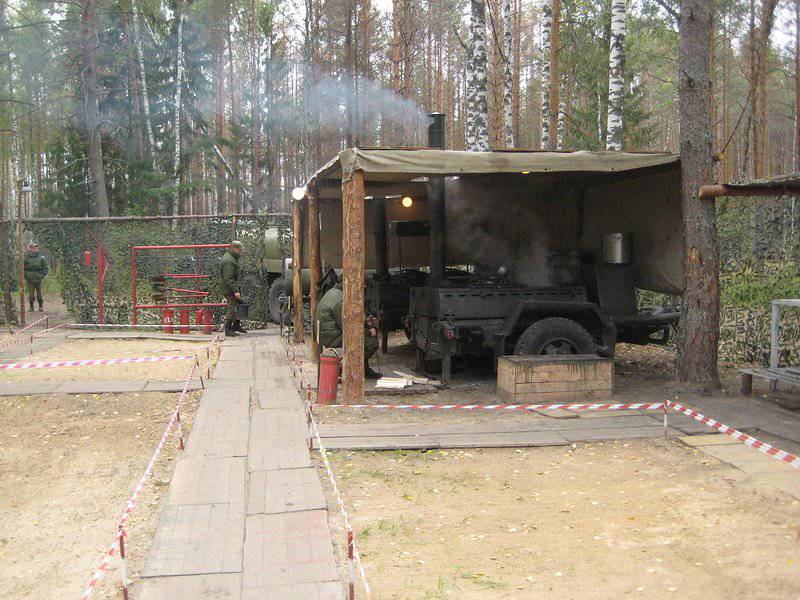
82.
Field bath module (more inside you can see here)
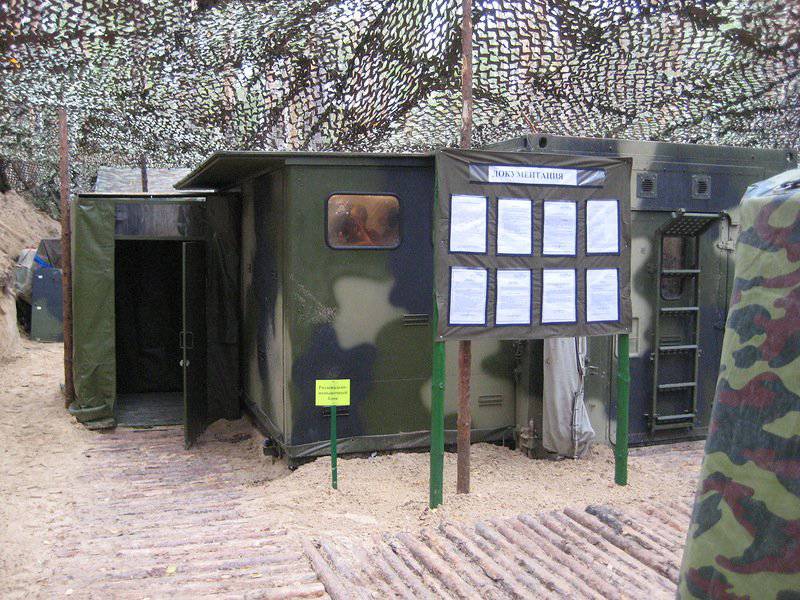
83.
Tents for putting dirty and dispensing clean linen
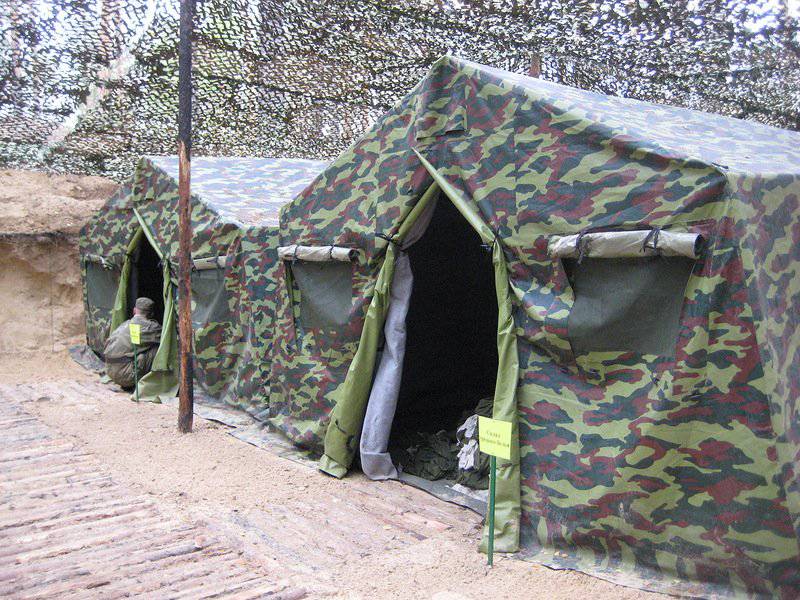
84.
Unfortunately, the photos provided by the field bath-laundry complex are of very poor quality and it was possible to extract only this.
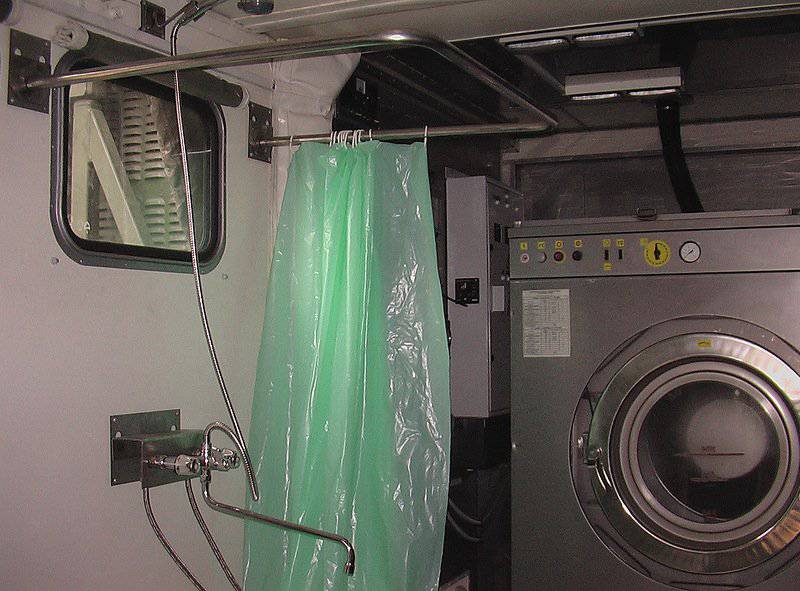
85.
The brigade has a field cinema based on GAZ-66, which would be nice to replace with a new one based on URAL. Show a movie shows, but the car itself is already asking for retirement
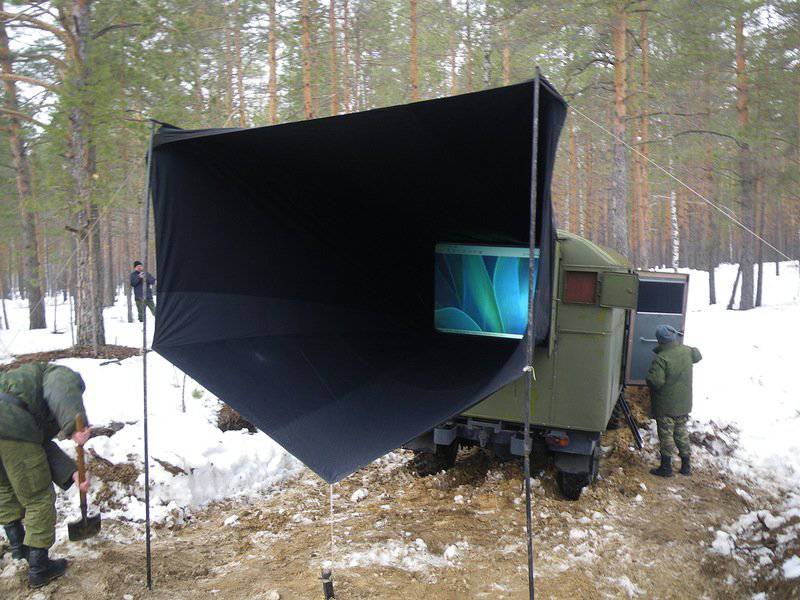
86.
Just on his example, the work of the repair and restoration units of the unit
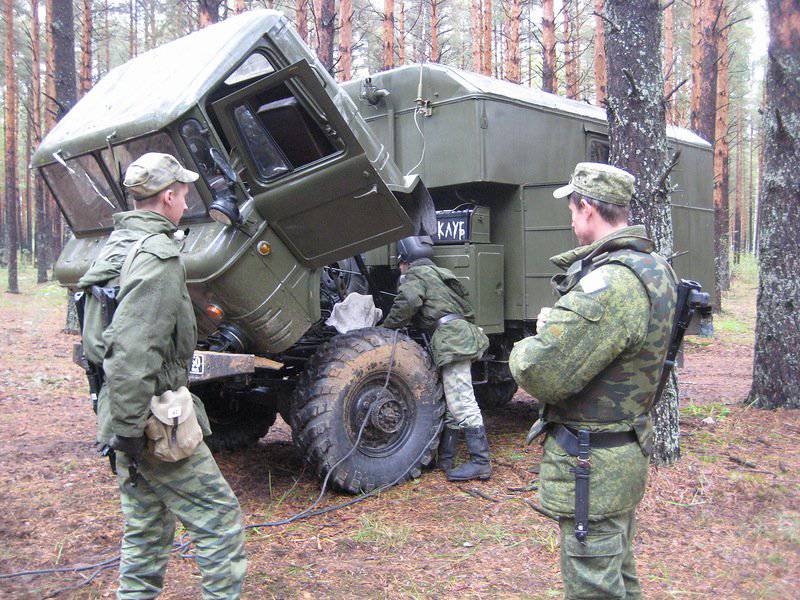
87.
I learned a lot from the cultural life in the fields for myself. For example, each battalion is given such an apparatus for receiving and broadcasting radio programs. Two speakers, an external antenna (which is a minus of the product, because it does not provide reliable reception in the field). You can listen to the radio, including FM radio stations, you can put mp3-discs, or you can connect a USB flash drive with music
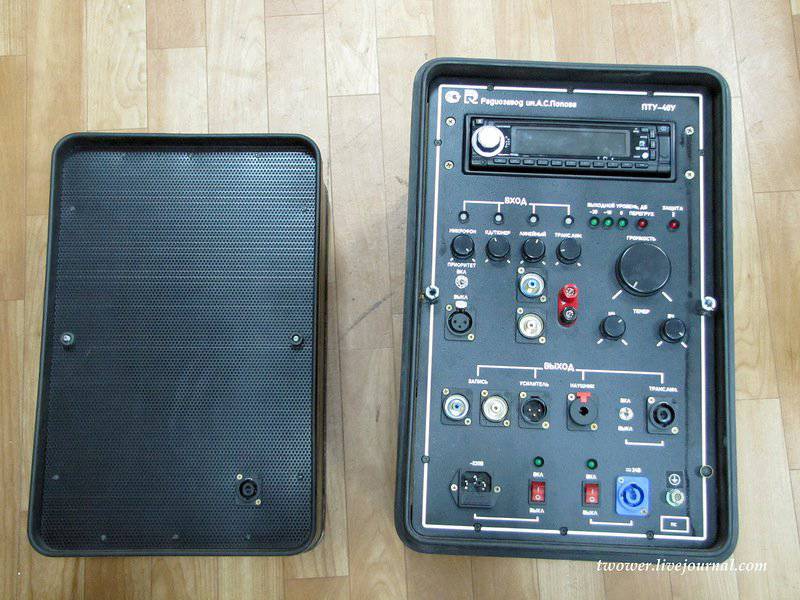
88.
For each platoon issued various radios.
Such
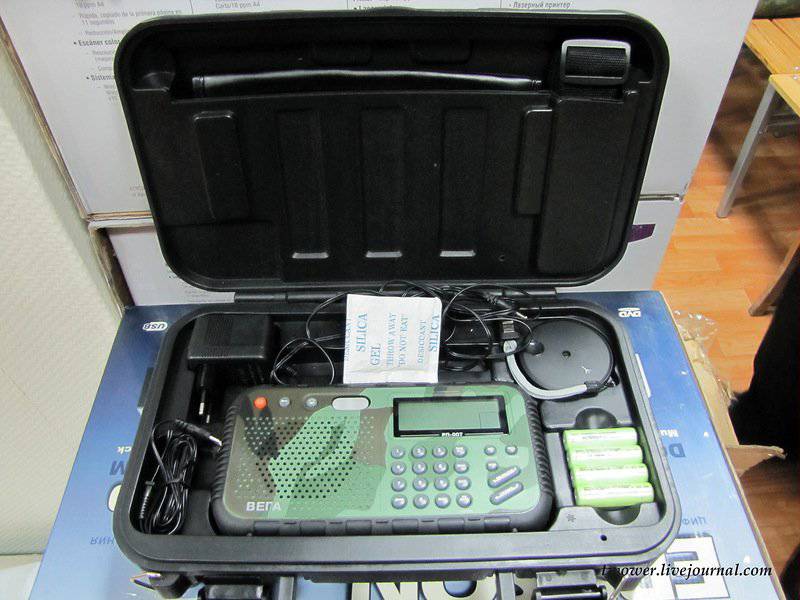
89.
Such
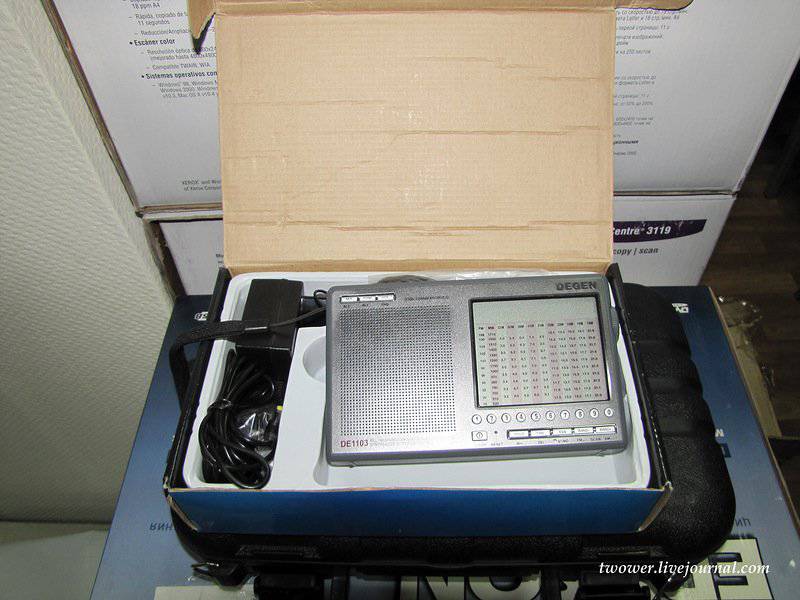
90.
And such
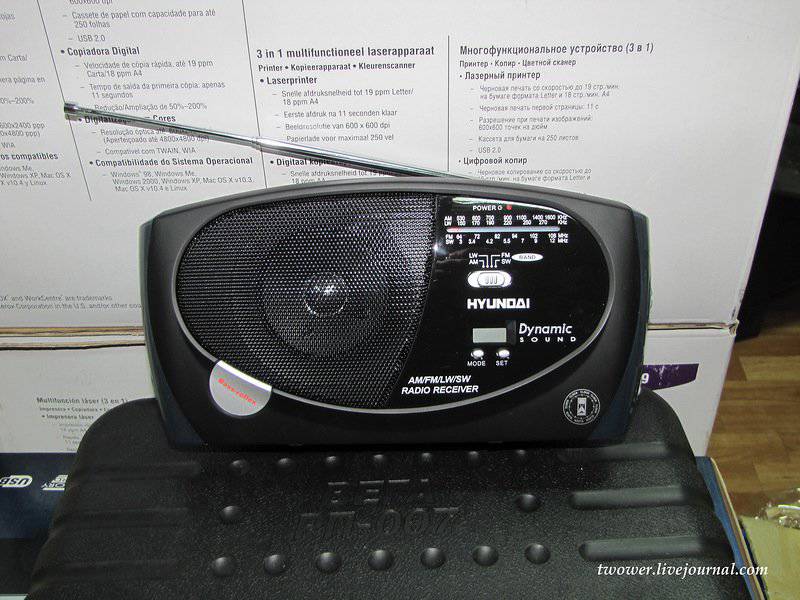
91.
They can be placed in the location where you live, or used in the field. It remains only to reconsider the issue of the material responsibility of the commanders of subdivisions, who are reluctant to use these radios because they will not pat on the head for damage. Generally, this is a chronic disease in our army, when the option “use less often is chosen, if only it does not break, or it will fly in.” In my opinion, it's time to come to the conclusion that "this is a technique and it will inevitably ever break down."
Well, this equipment can be used both for showing films and for field concerts of the brigade ensemble (about it in the next part)
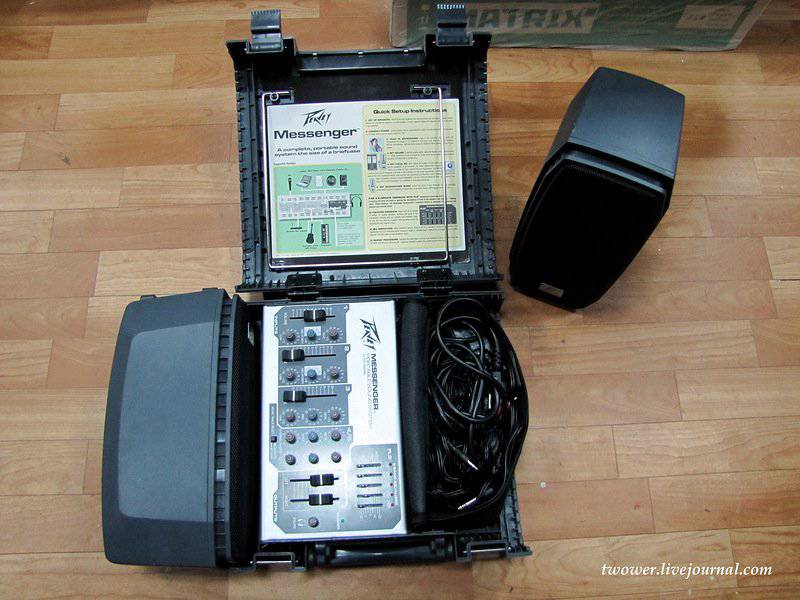
92.
Let's return to the lessons with the staff. There are simulators in the brigade, which are currently located in the basements under the hostel barracks. The construction of the training building was frozen in 2008 half-way. Now it looks like this
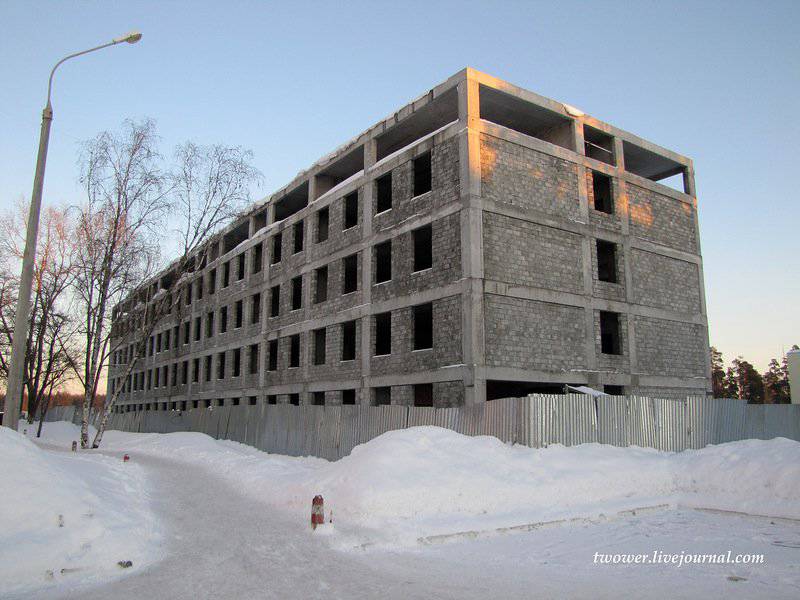
93.
I hope the funds will be found and finish it.
Shooting simulators standard.
For grenade throwers
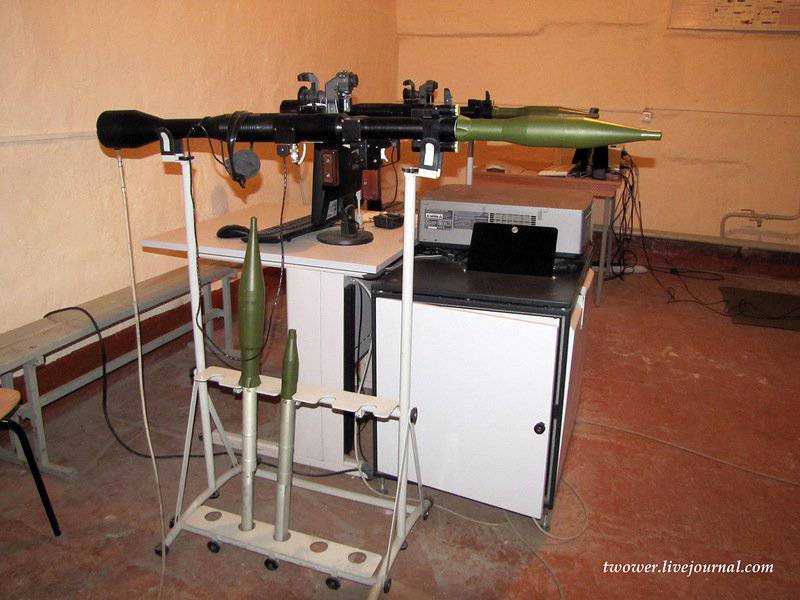
94.
For snipers, machine gunners, machine gunners
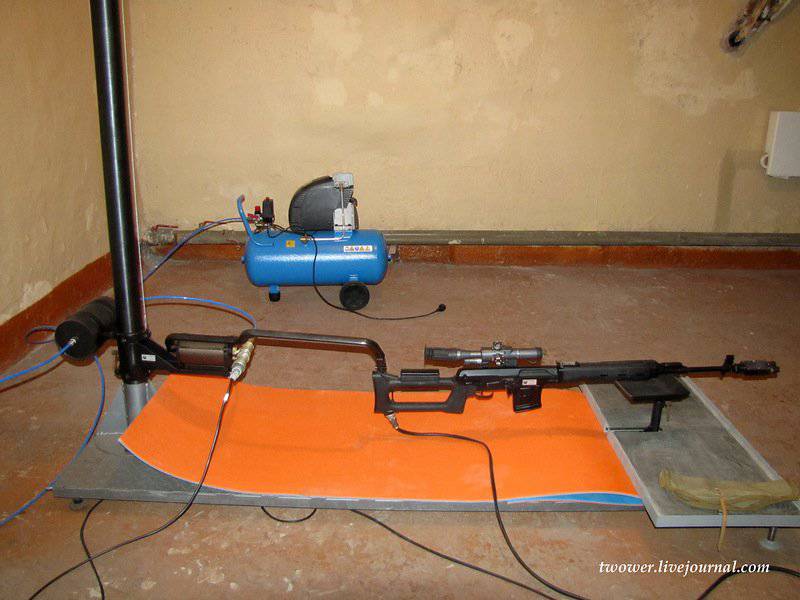
95.
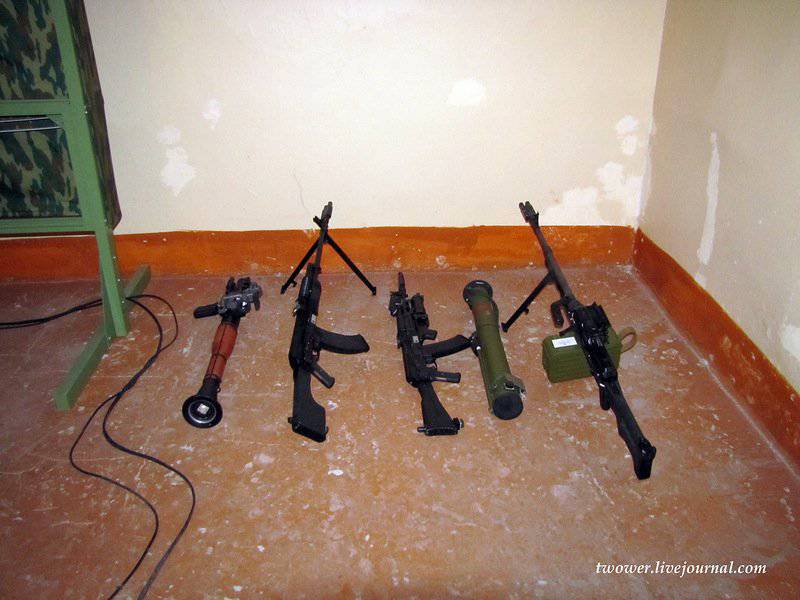
96.
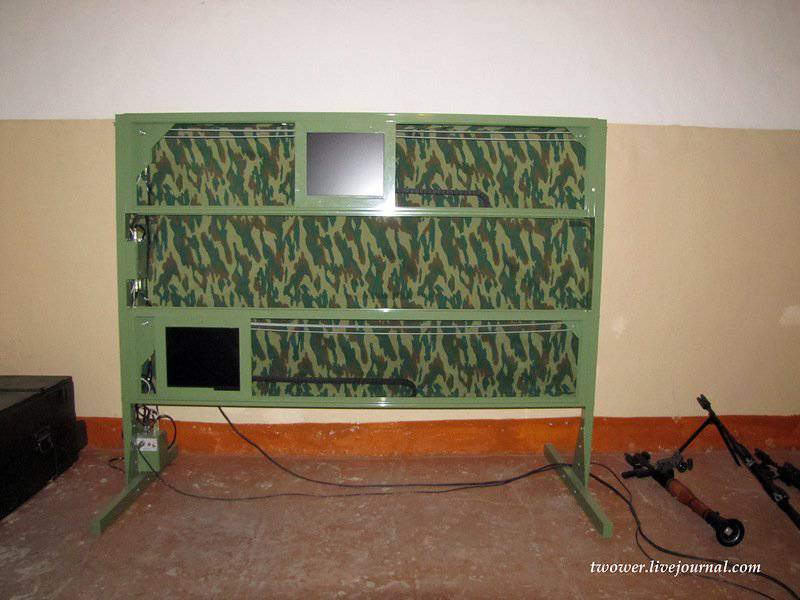
97.
Mobile module for training gunners and commanders of the T-80 tank. This is the sergeant, the head of the training complex.
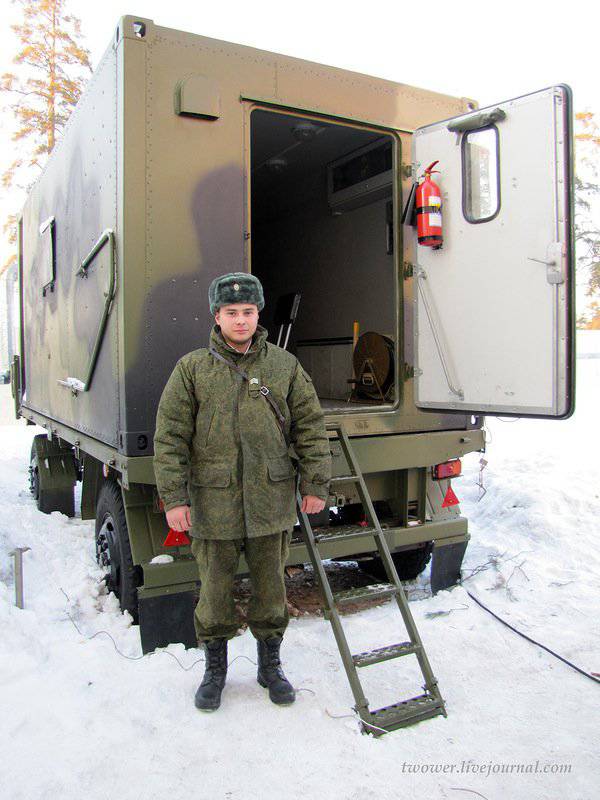
98.
Simulated shooting both shells and tank guided missiles
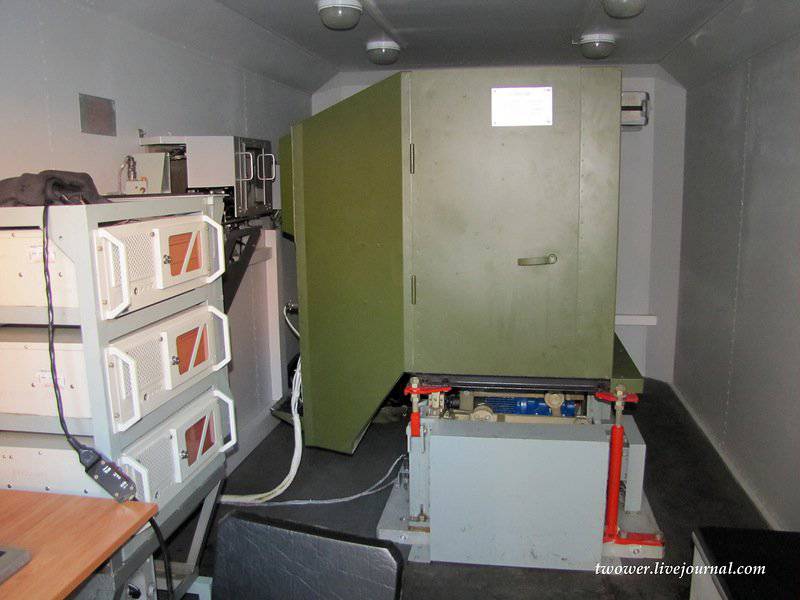
99.
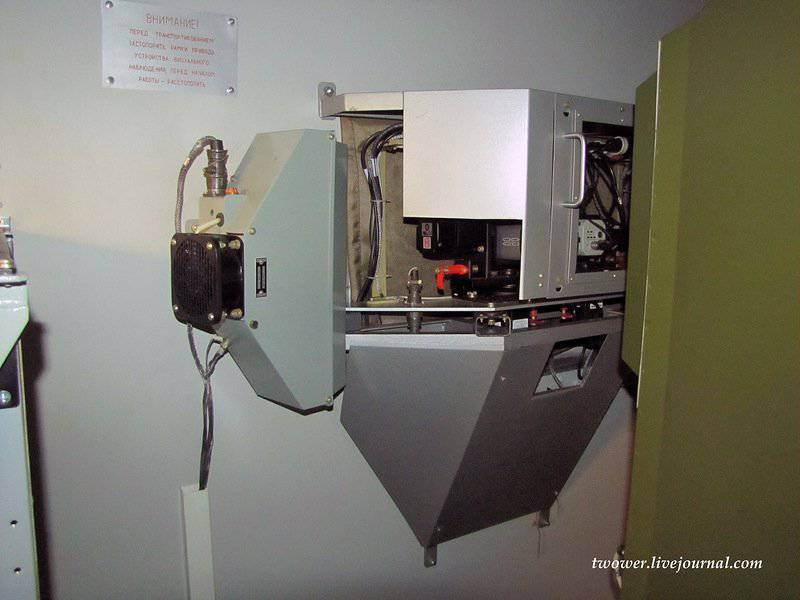
100.
Instructor's seat
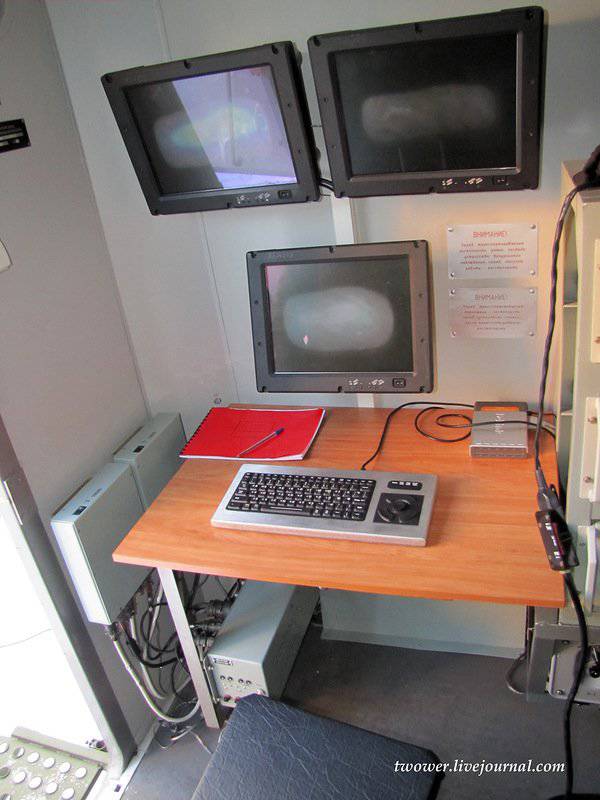
101.
View of the tank gunner training place
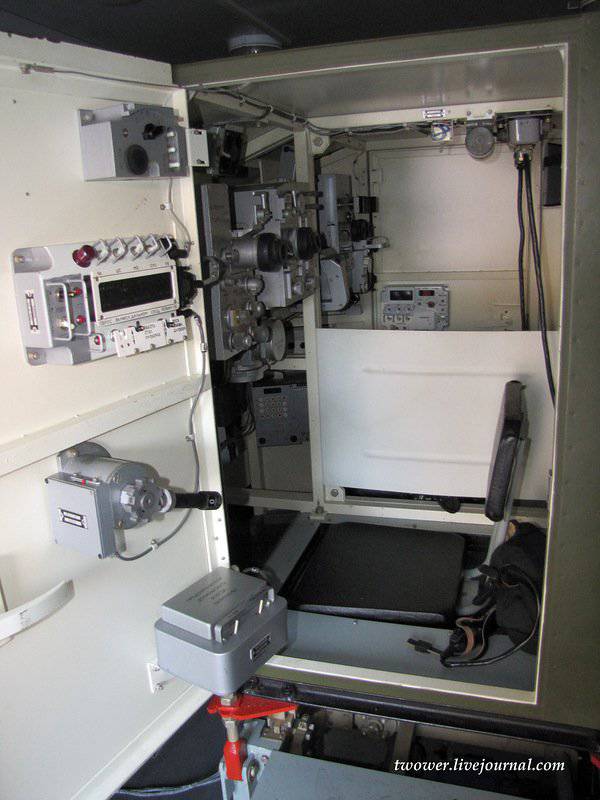
102.
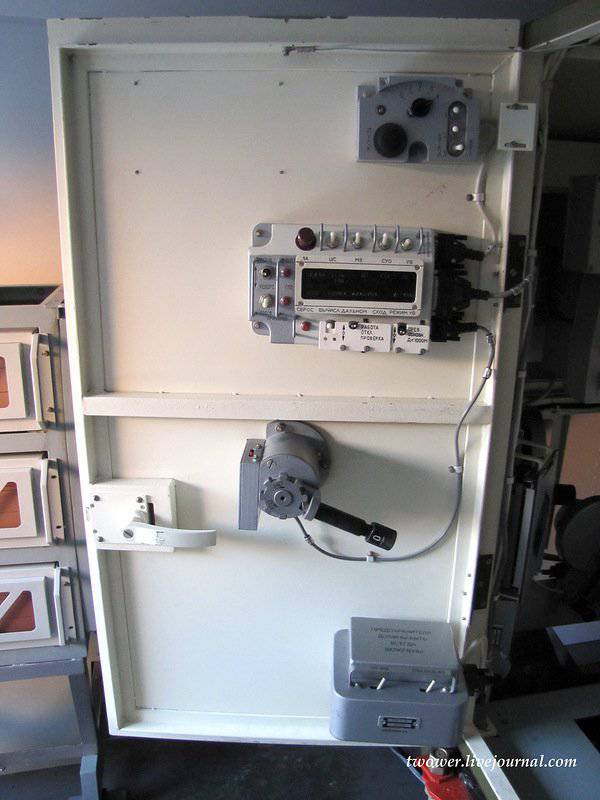
103.
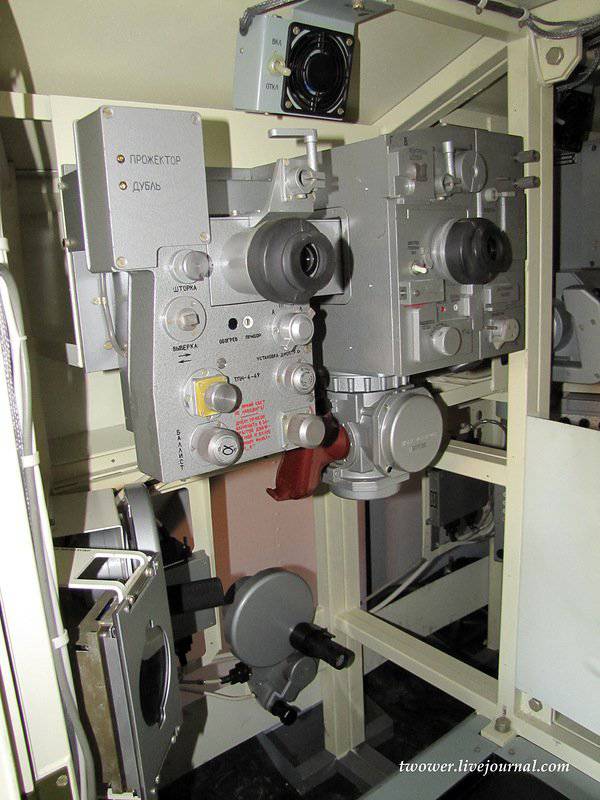
104.
View of the training place of the tank commander
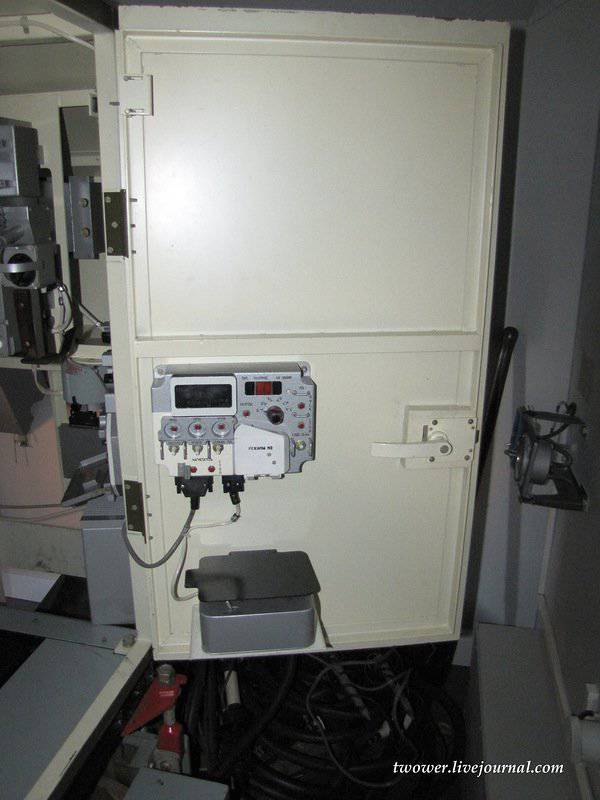
105.
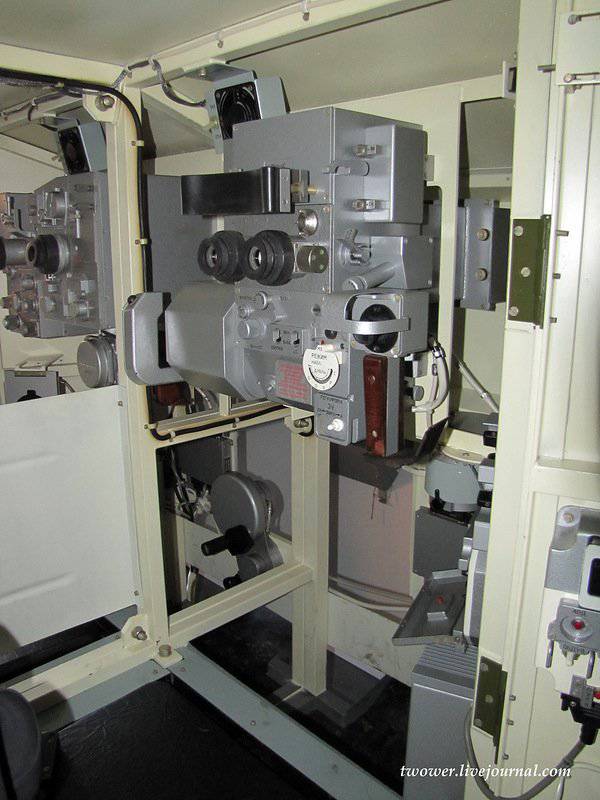
106.
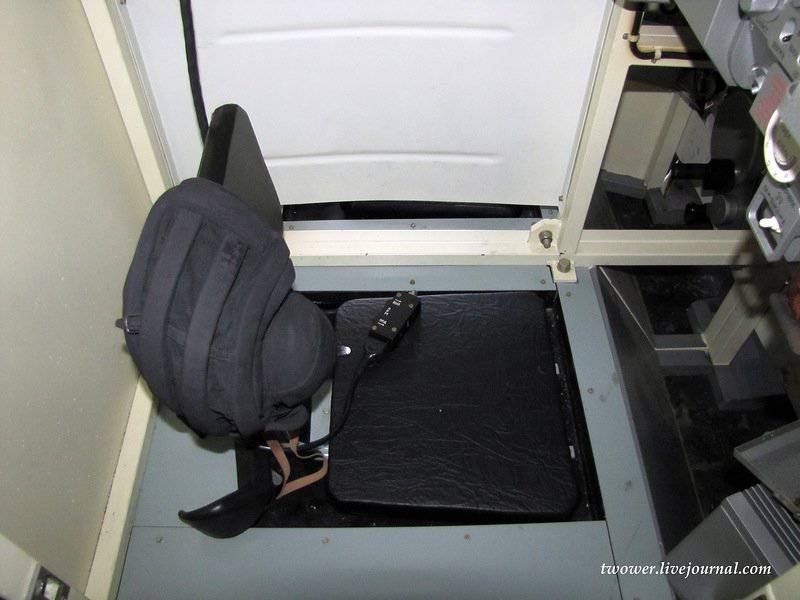
107.
There are also other simulators, for example, for the operators of the Sturm-S complexes of anti-tank battalions, but they were located in another town (the brigade is located in two towns) and could not be removed.
It was a technique and combat training in the 6 Tank Brigade
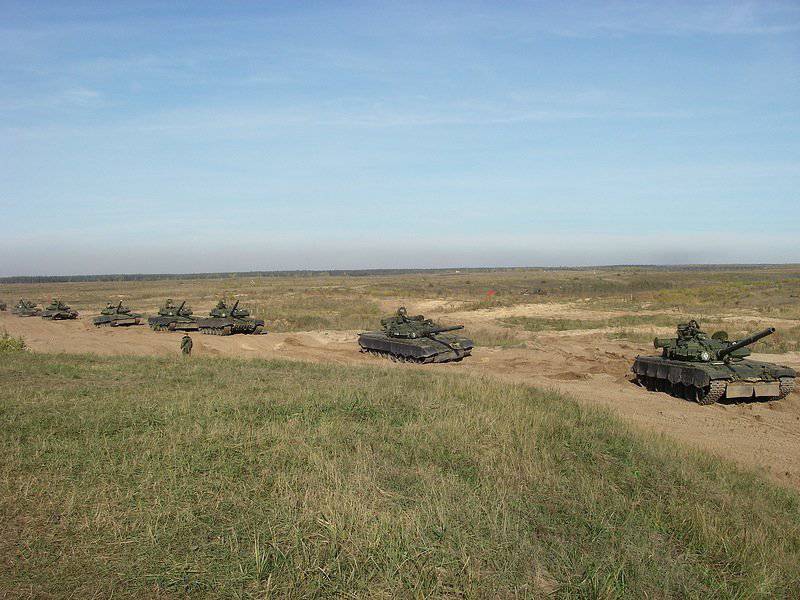
108.
Information